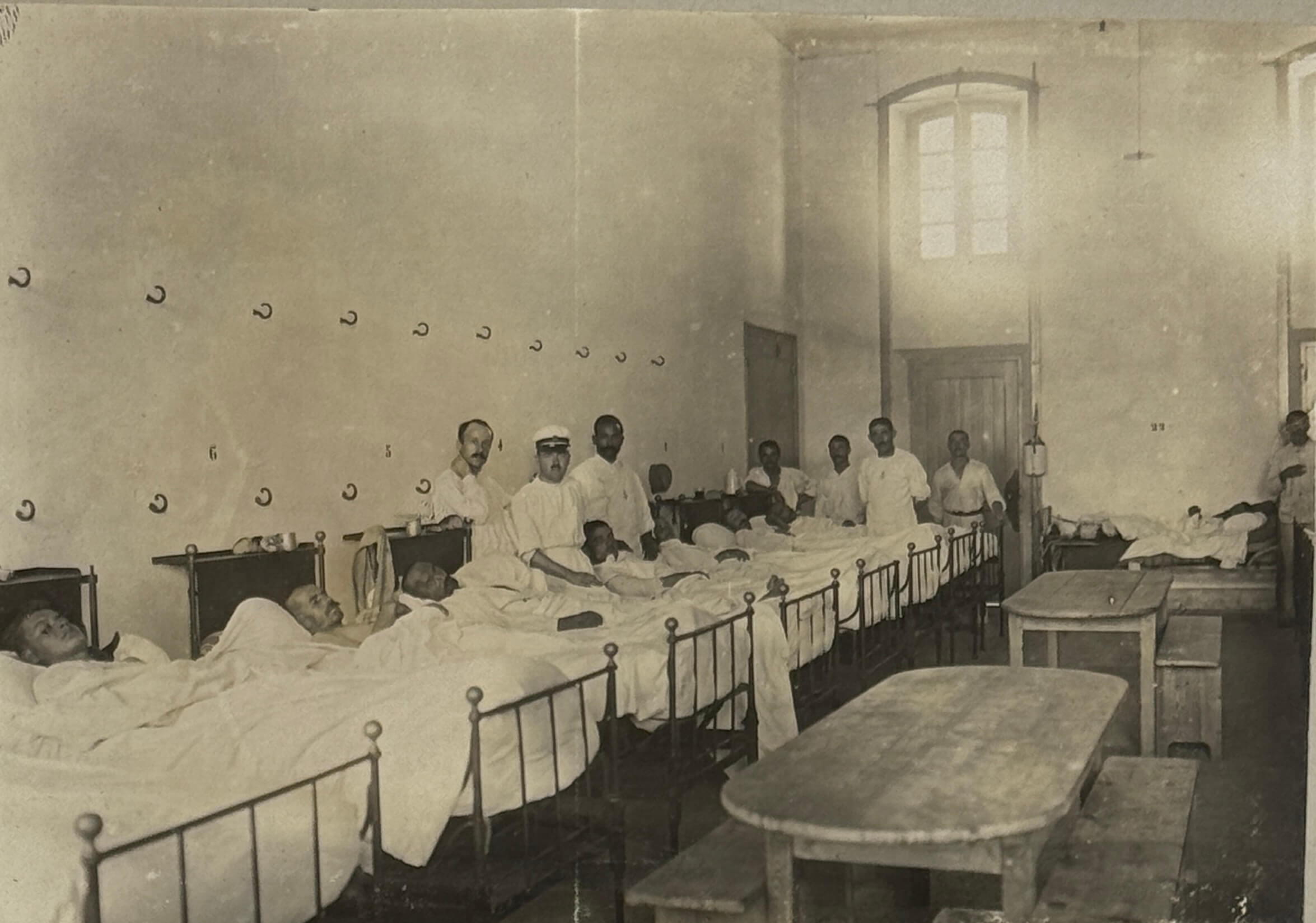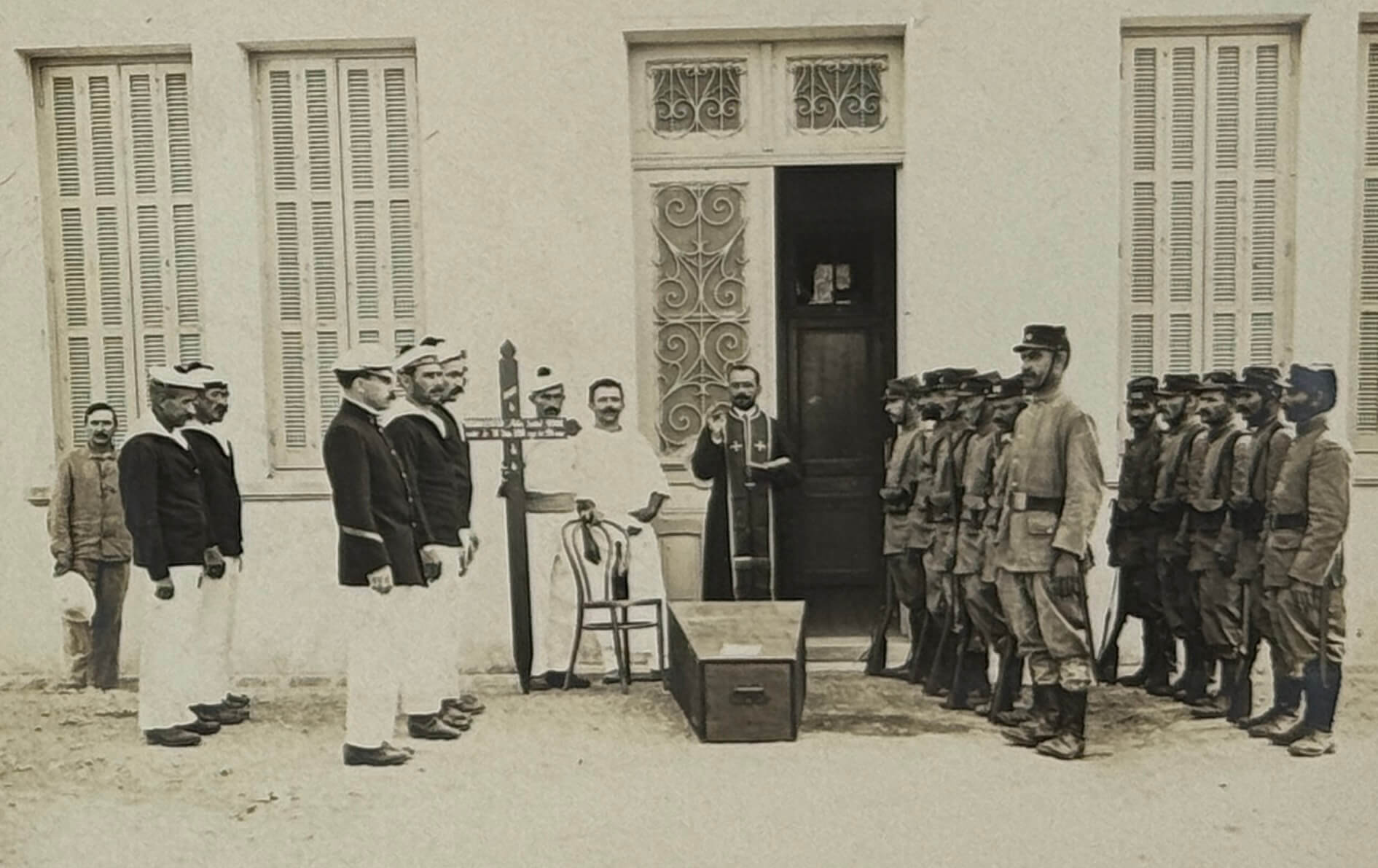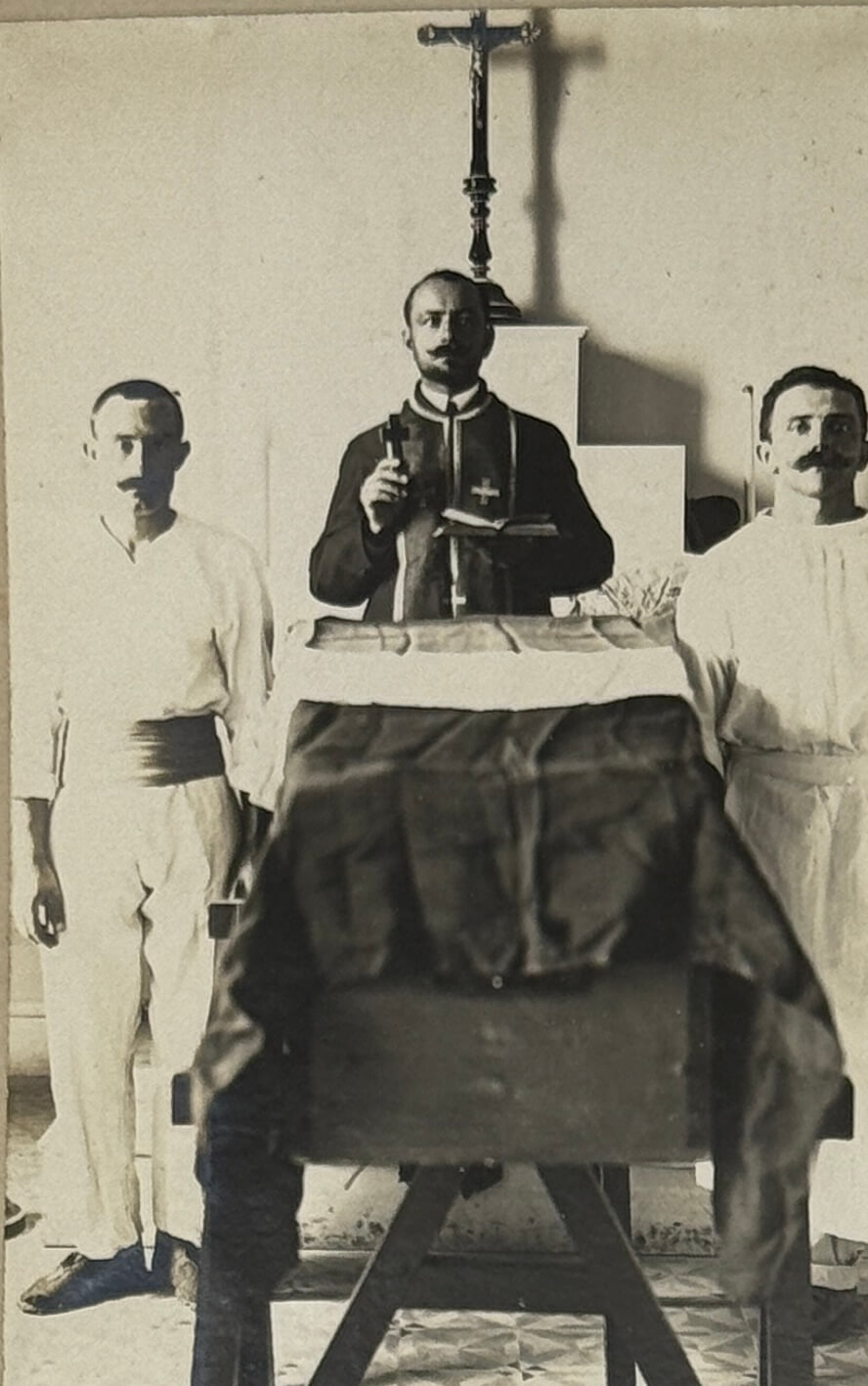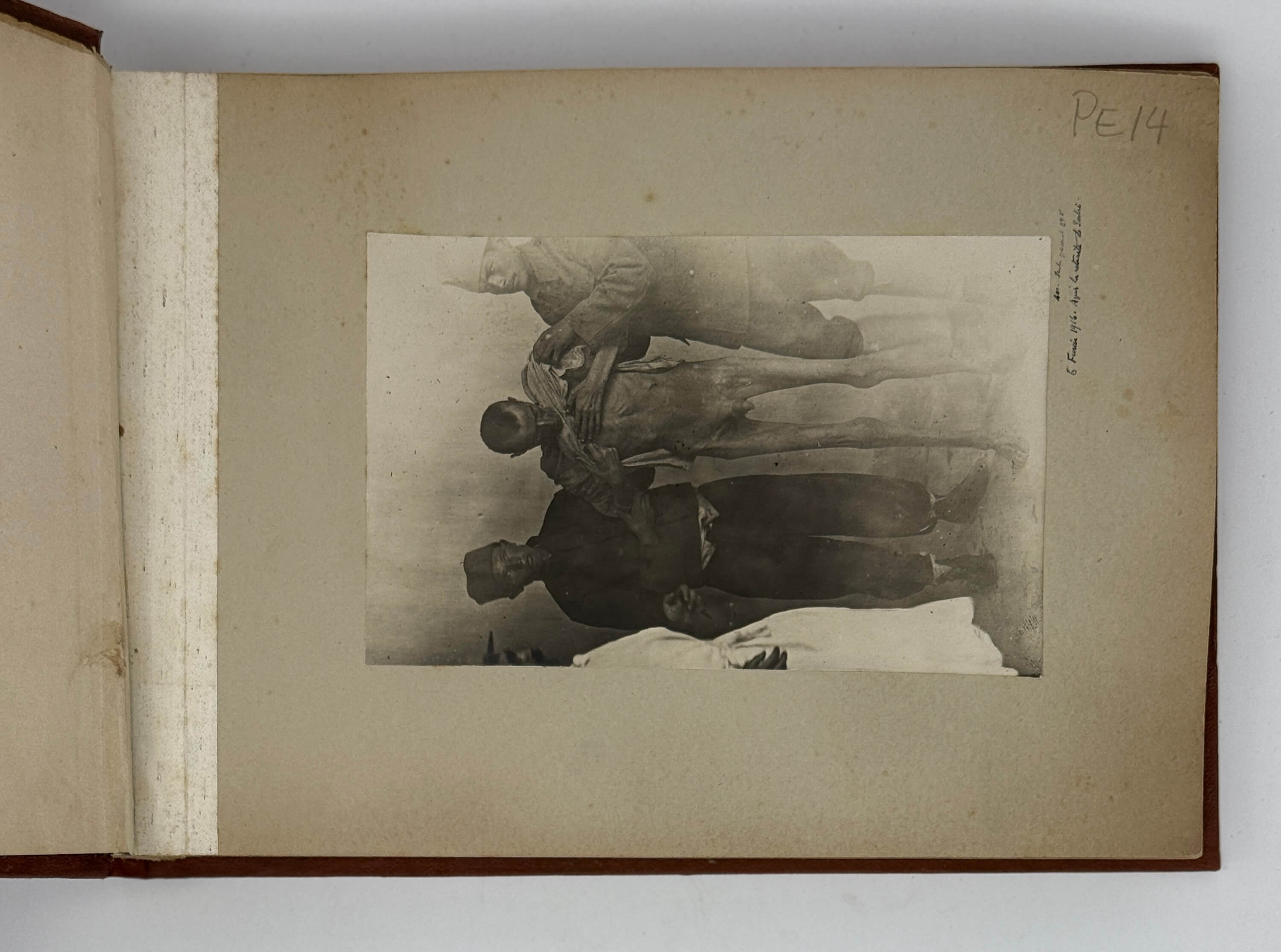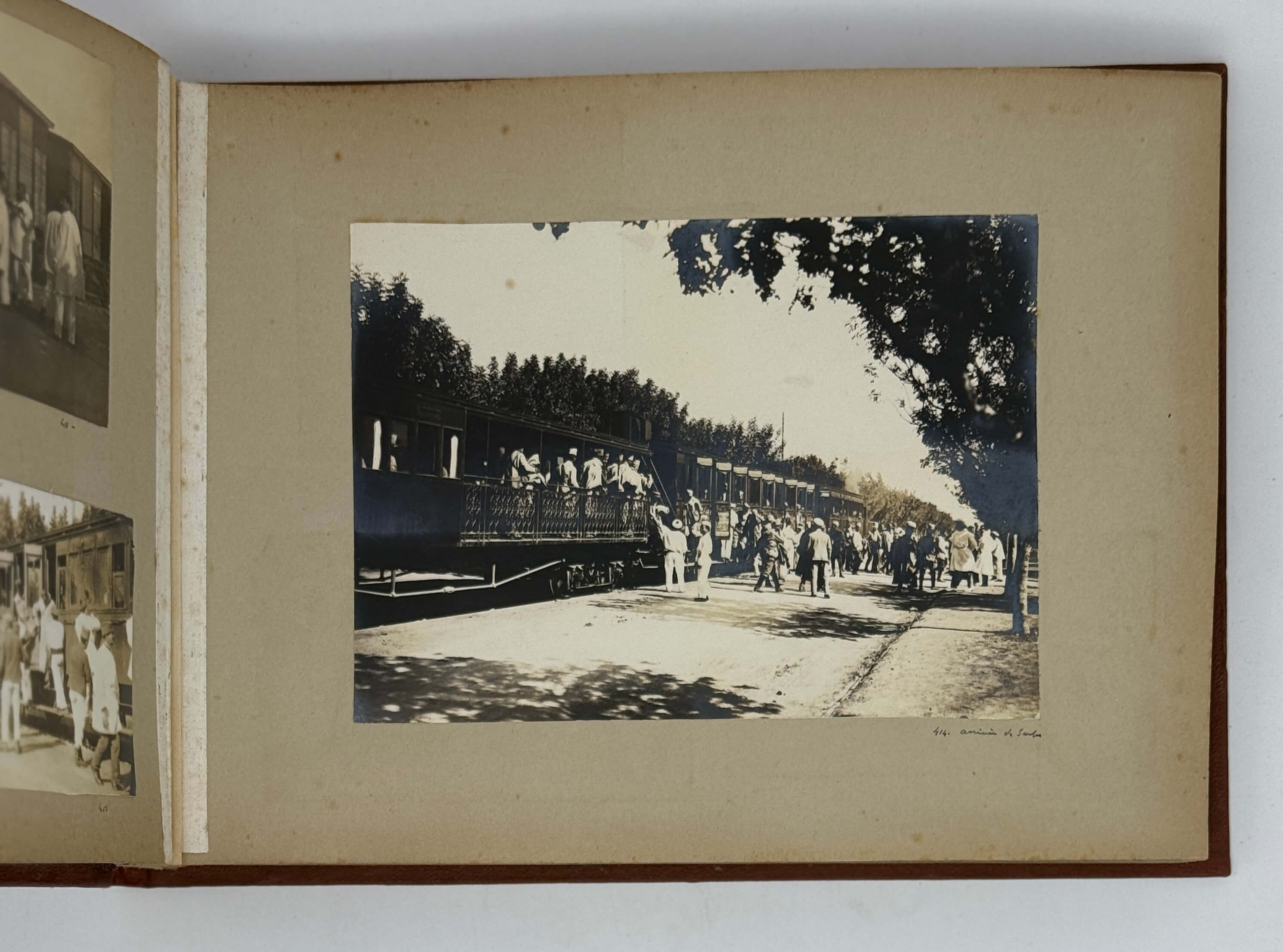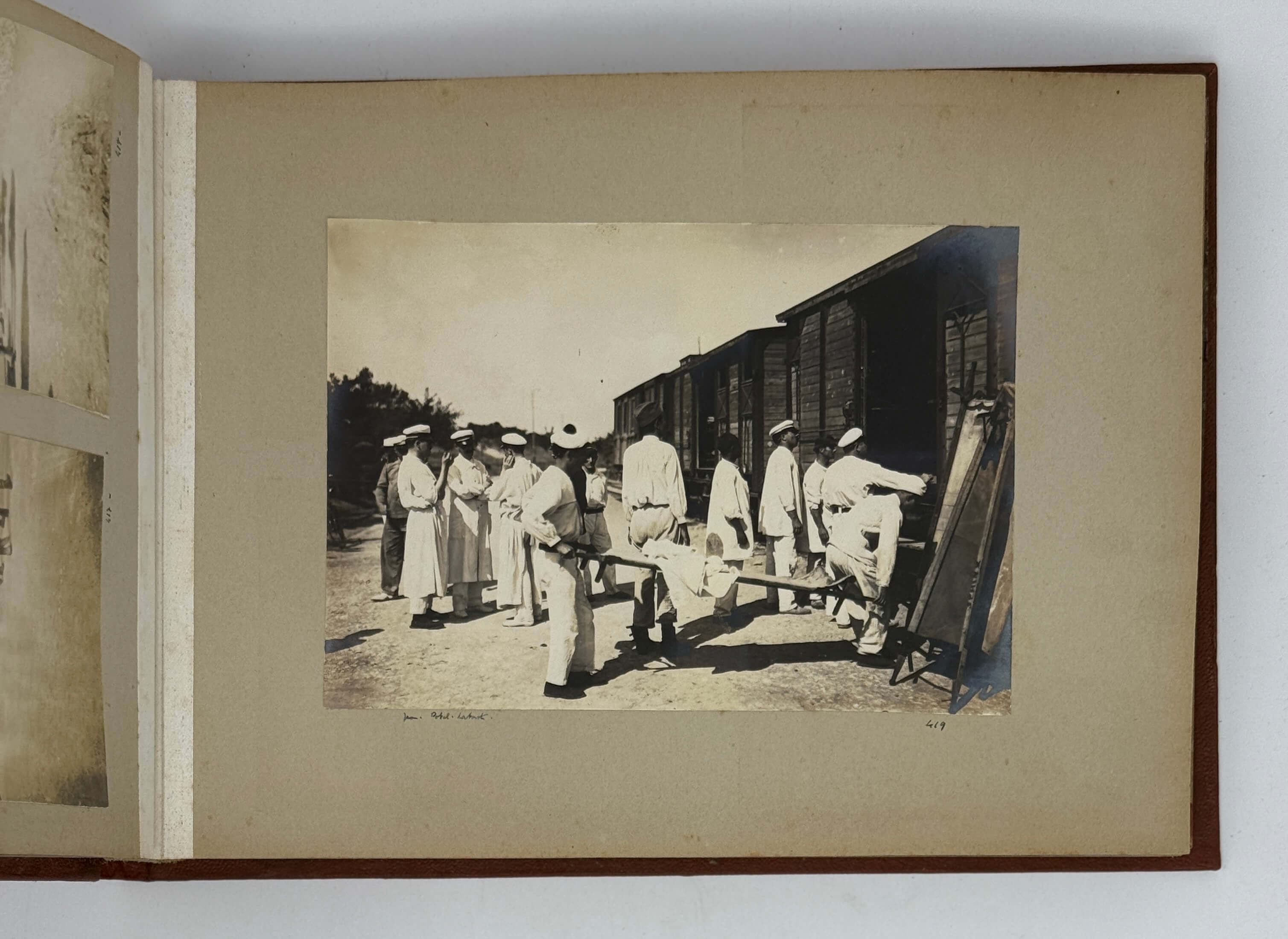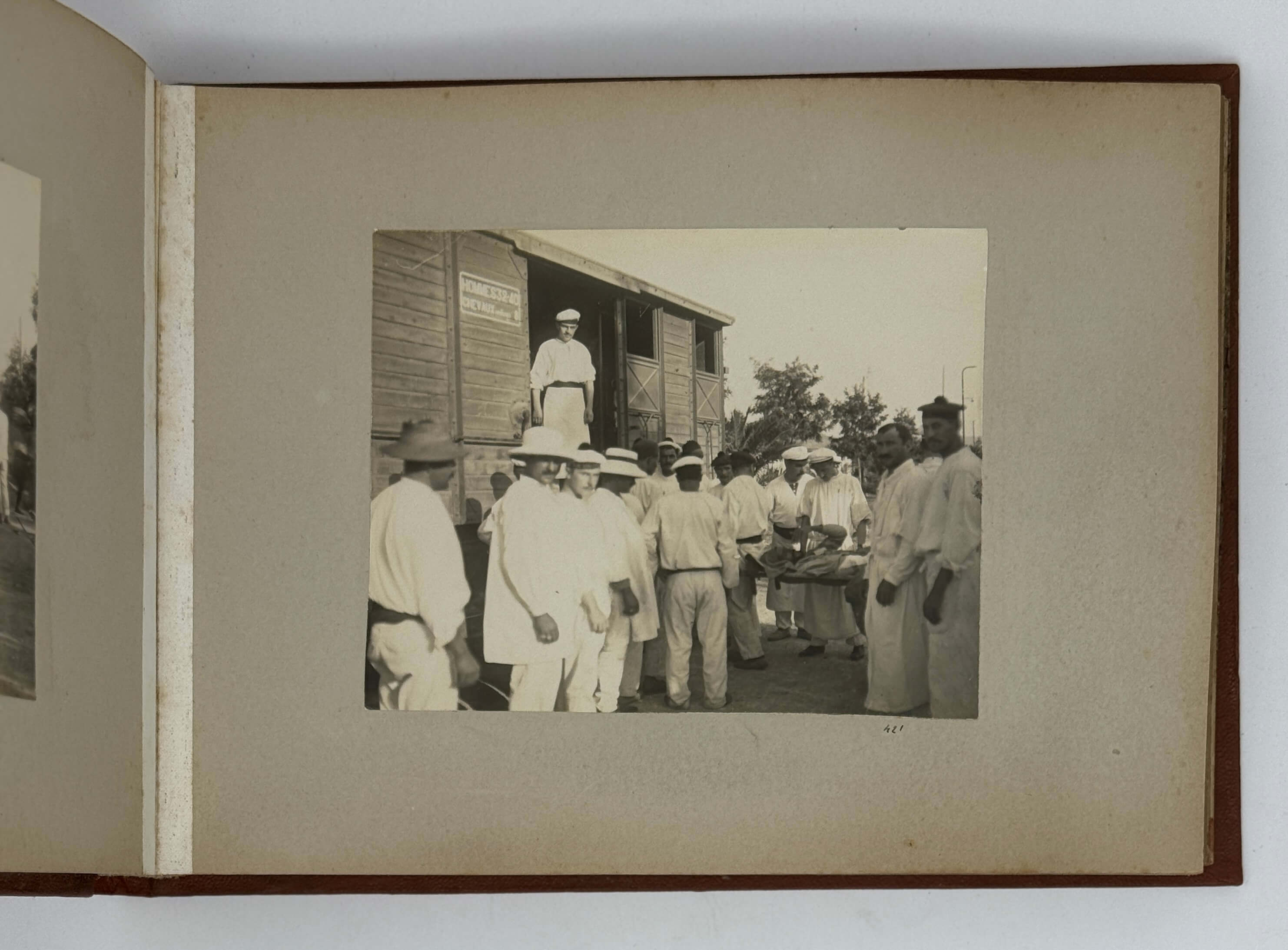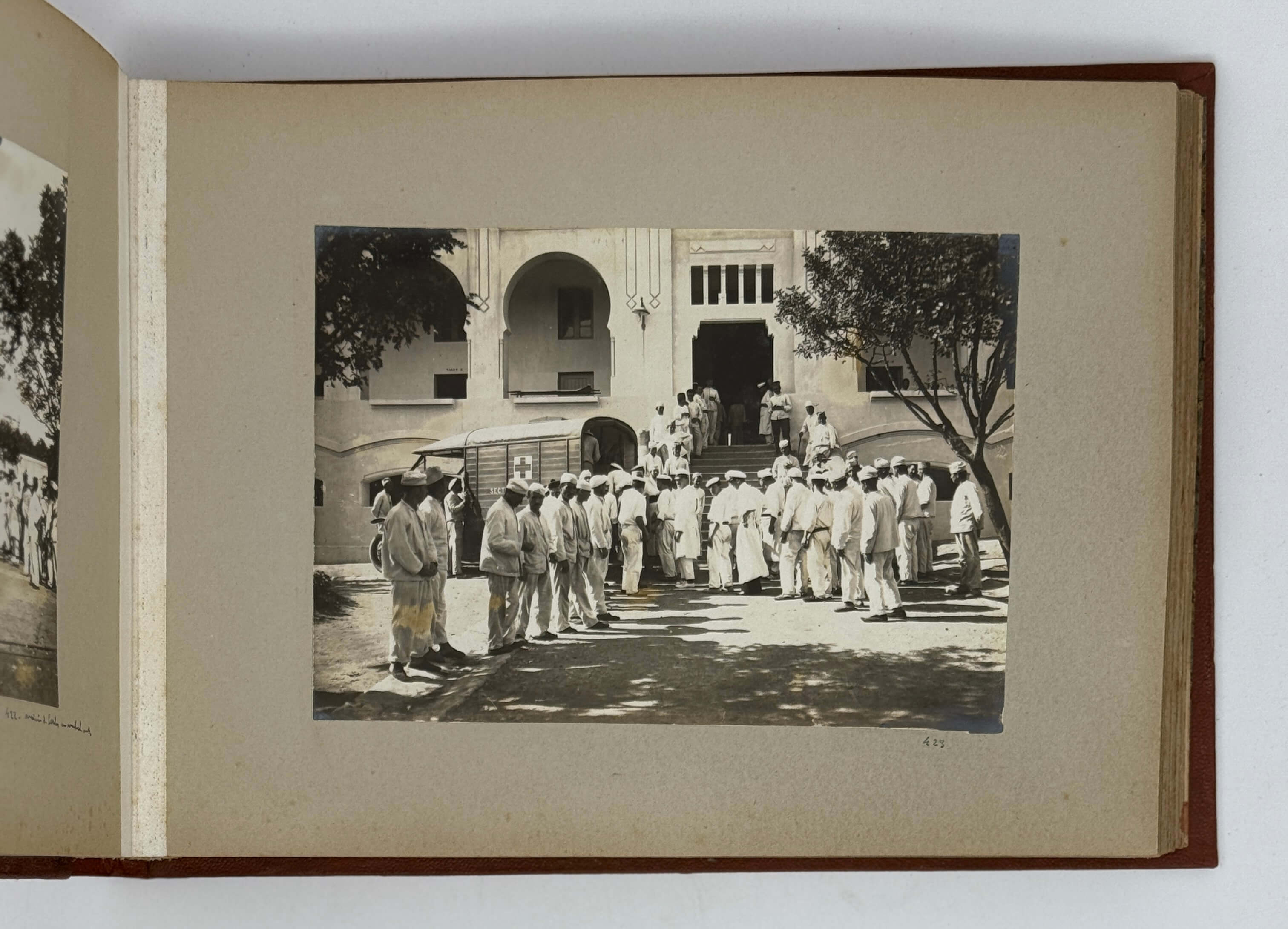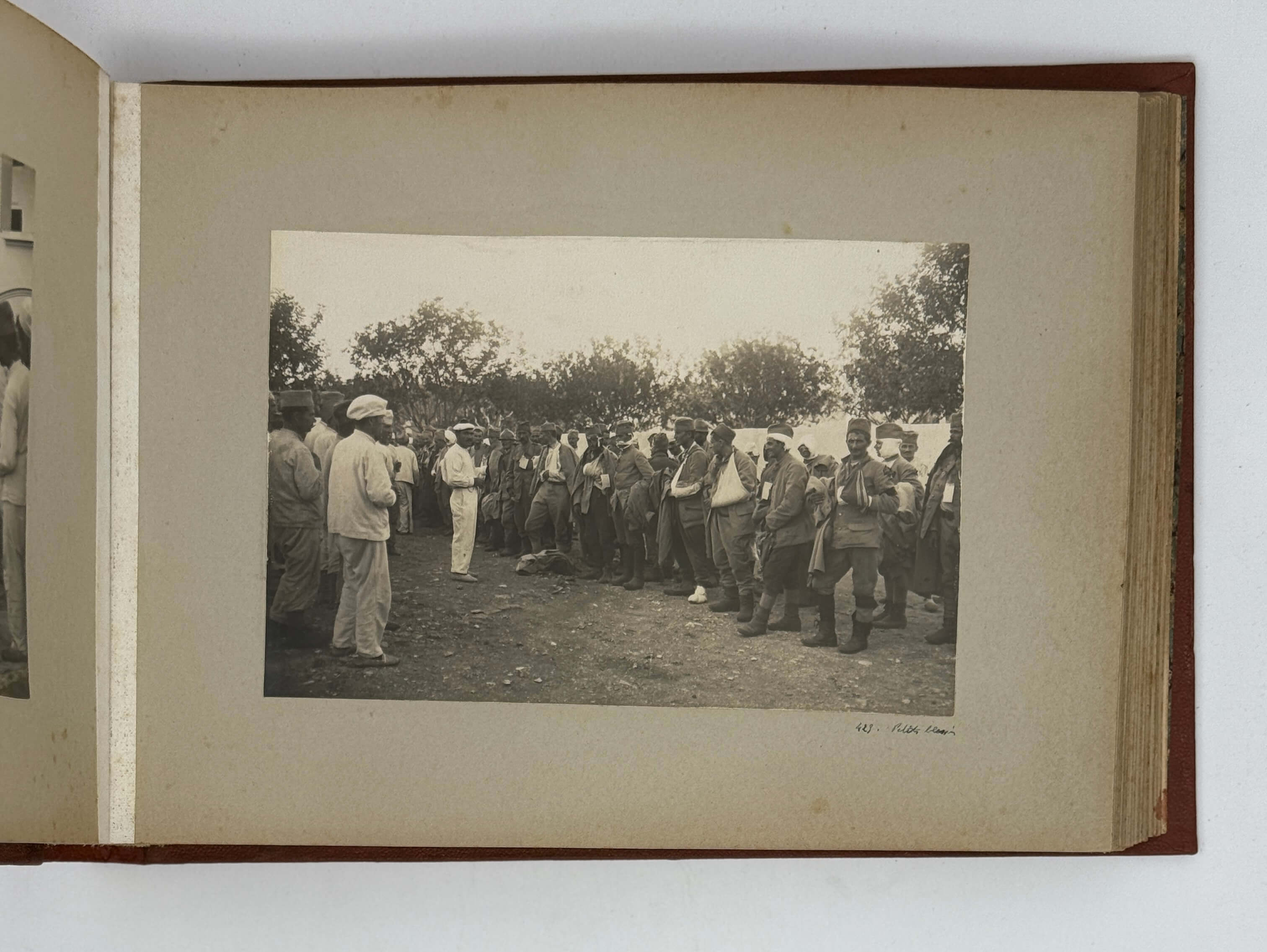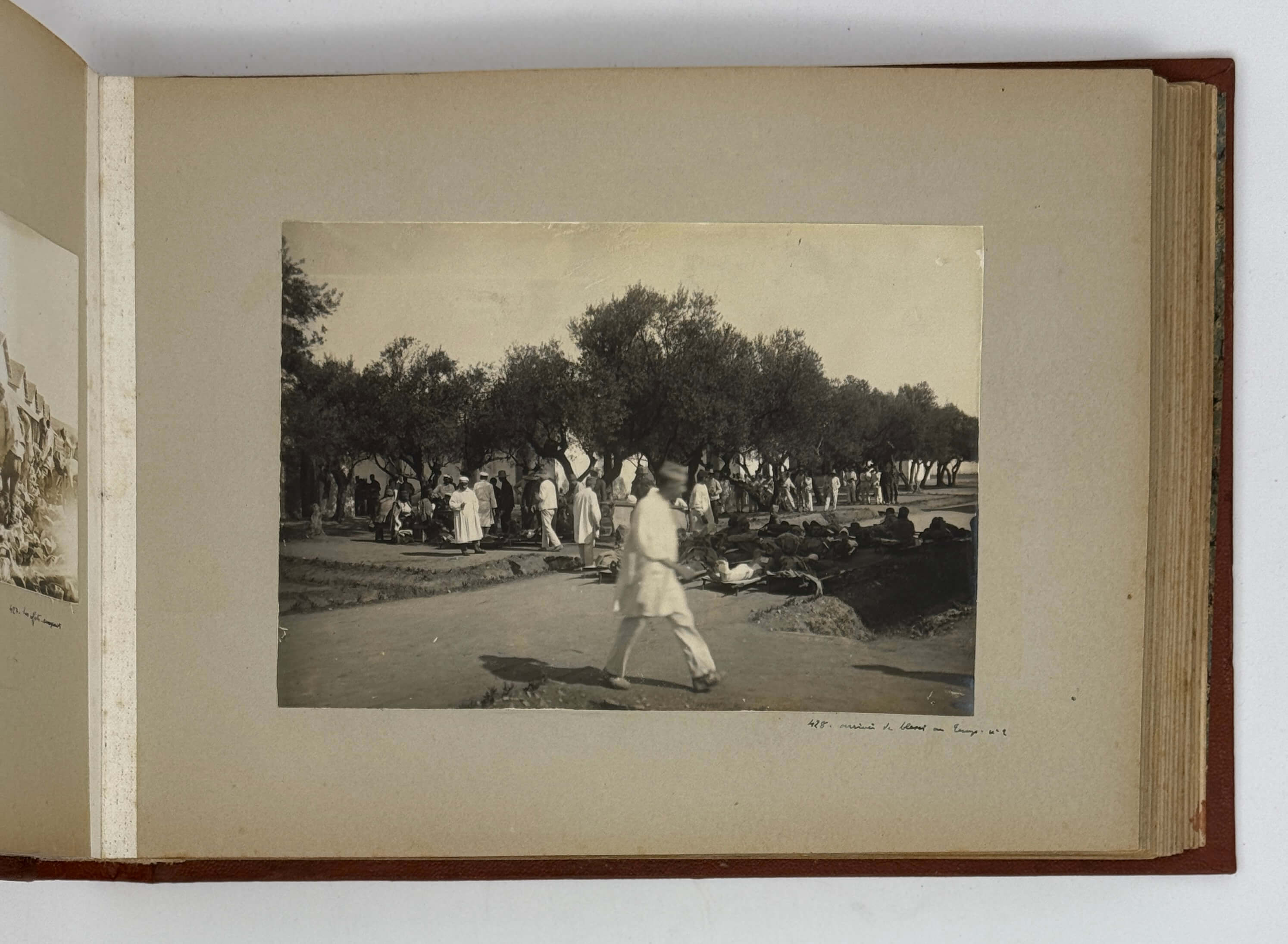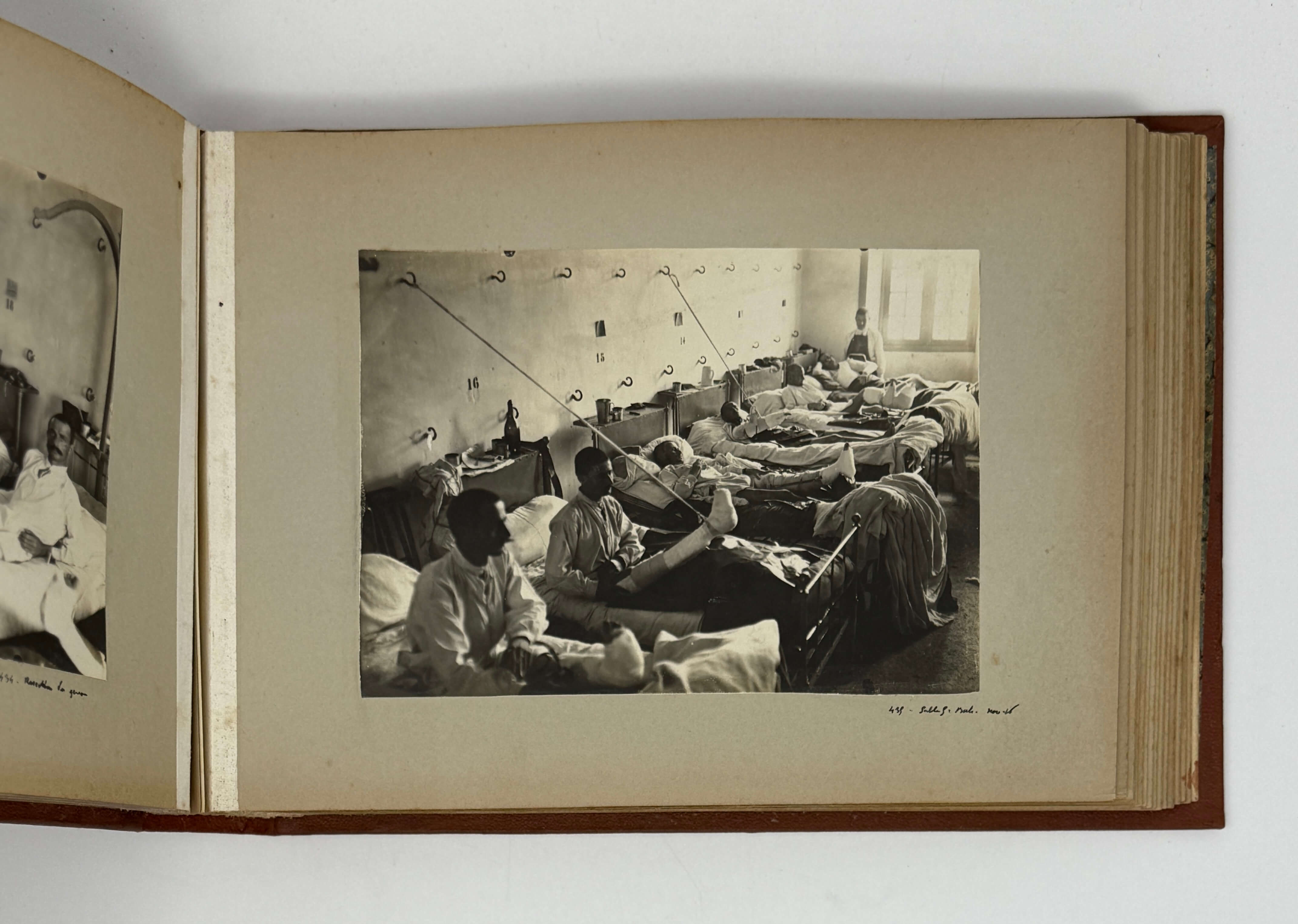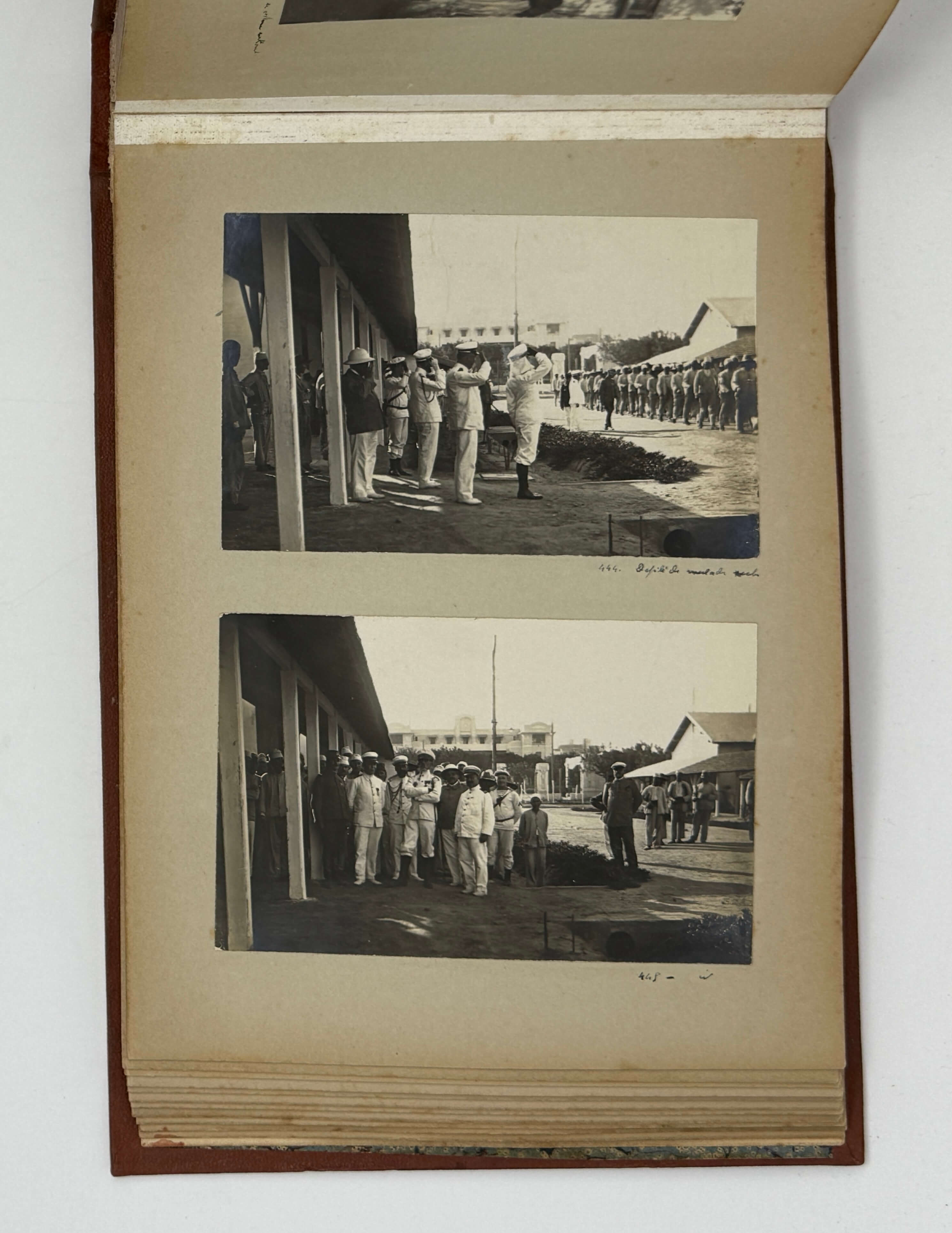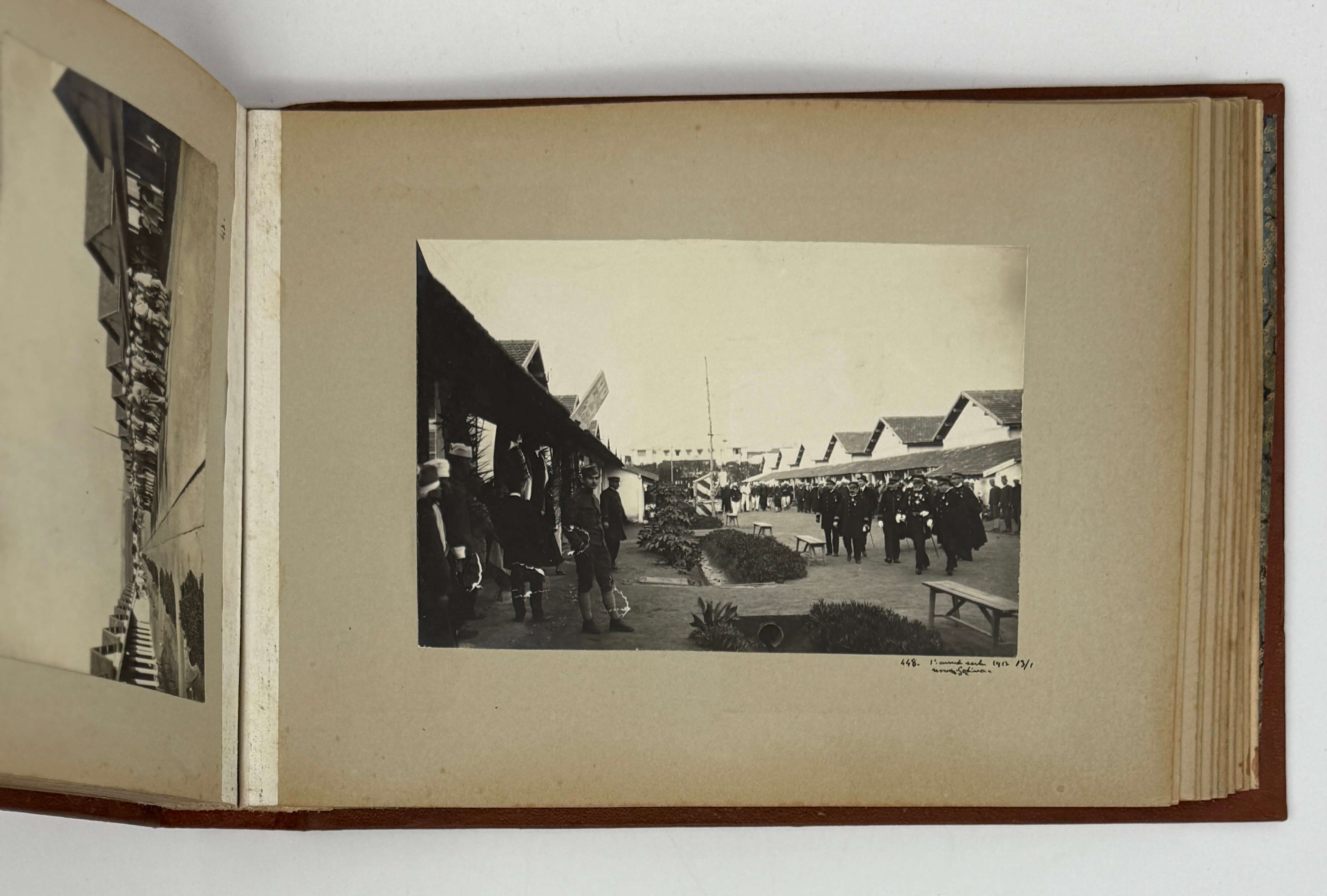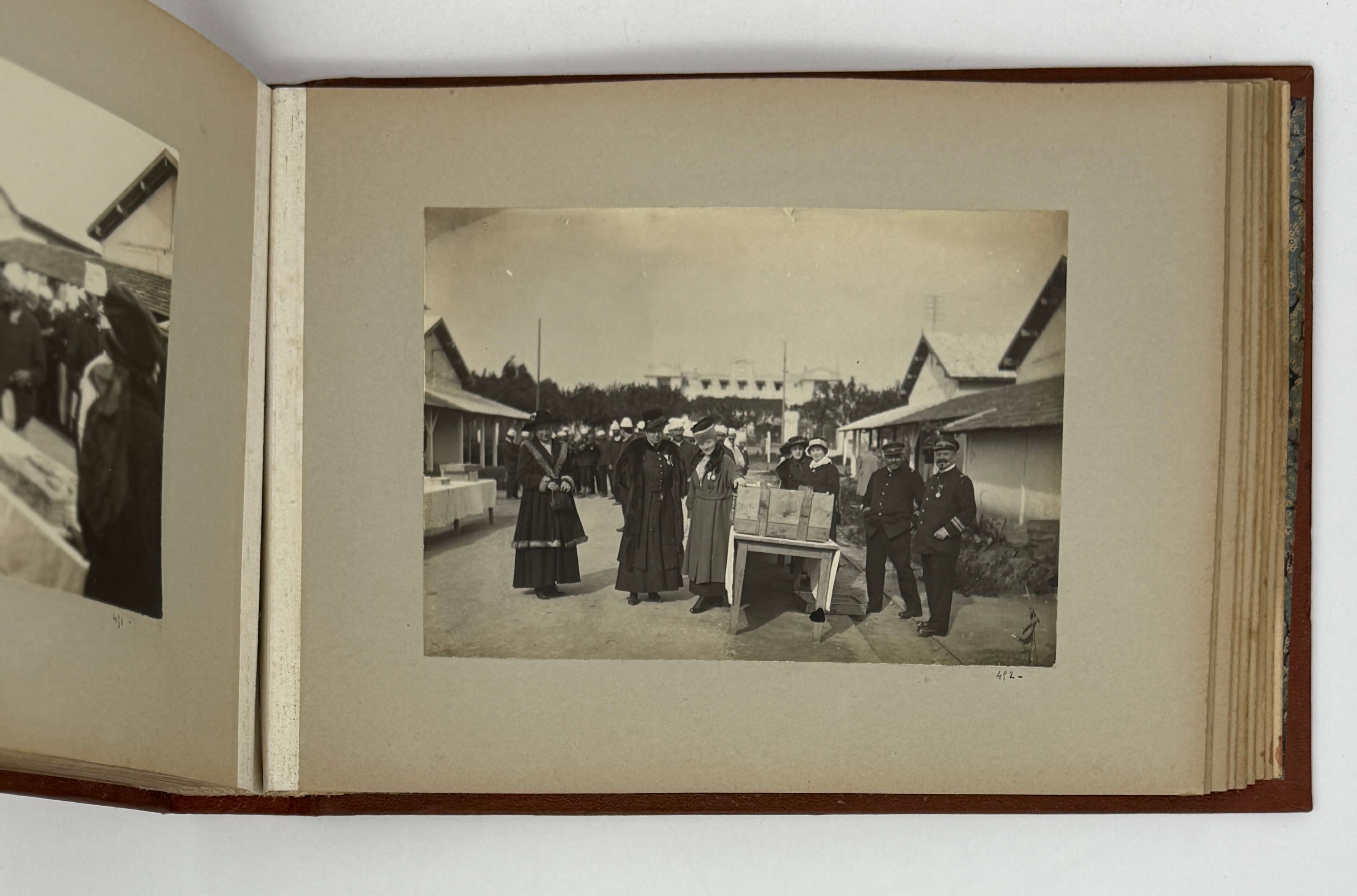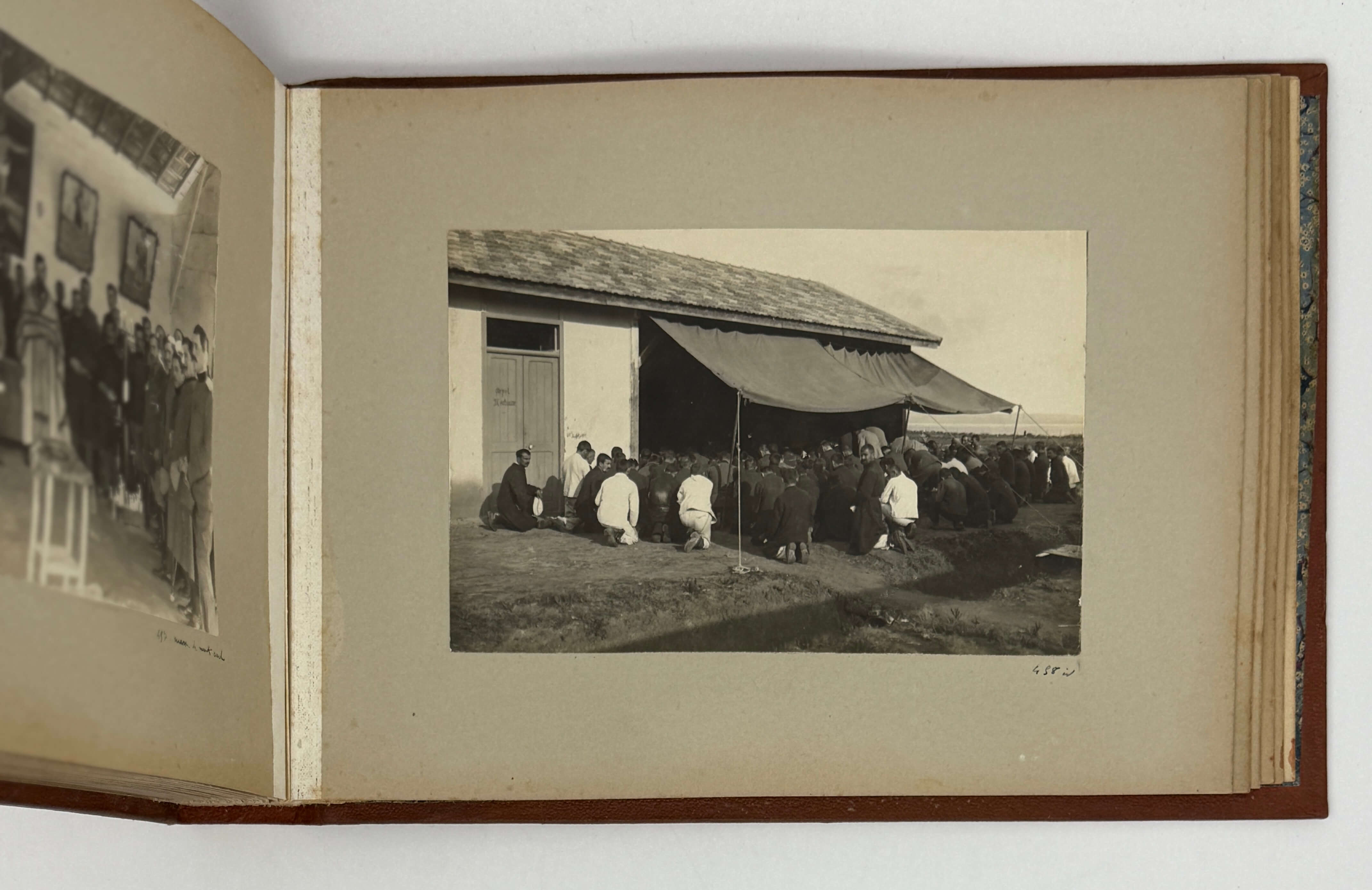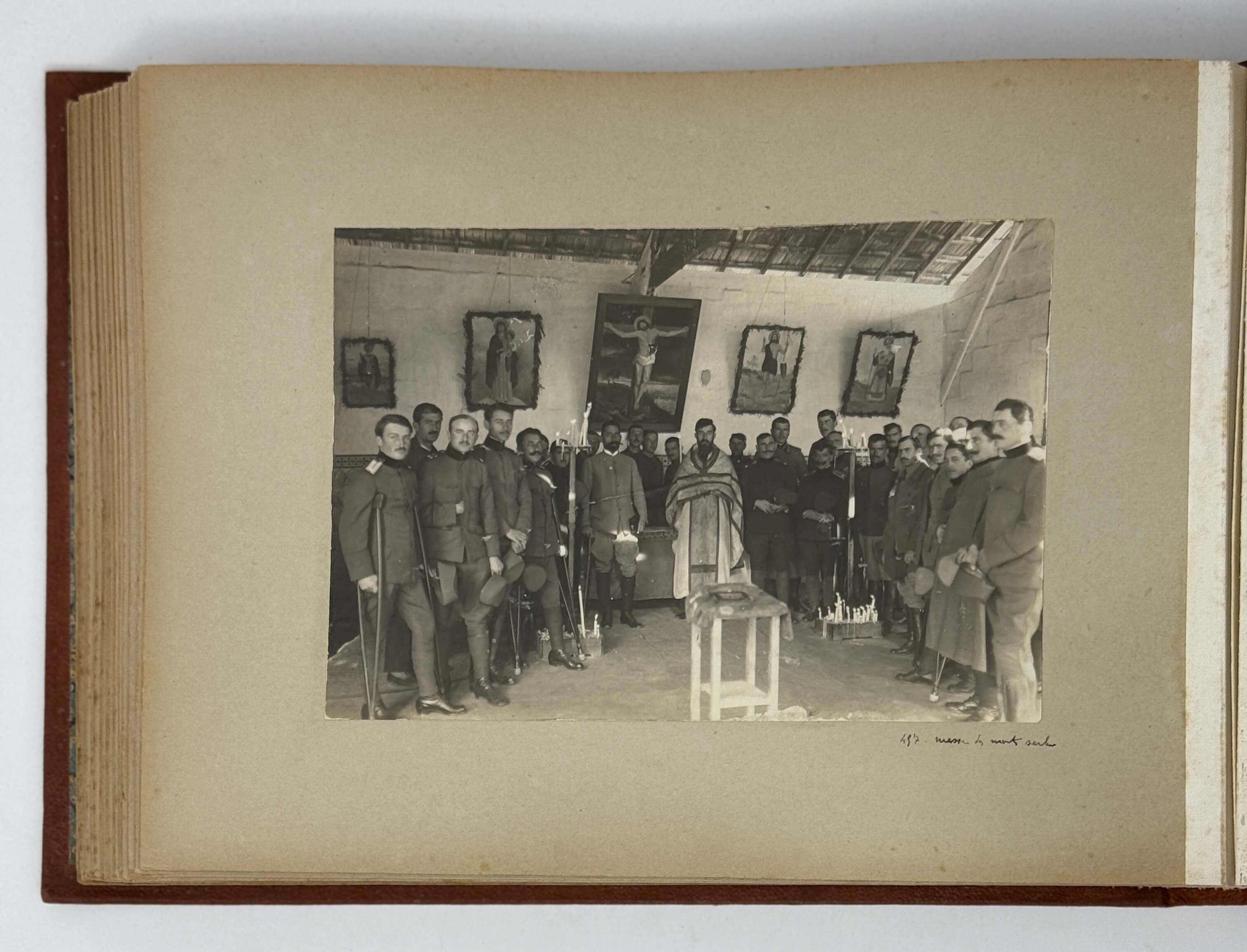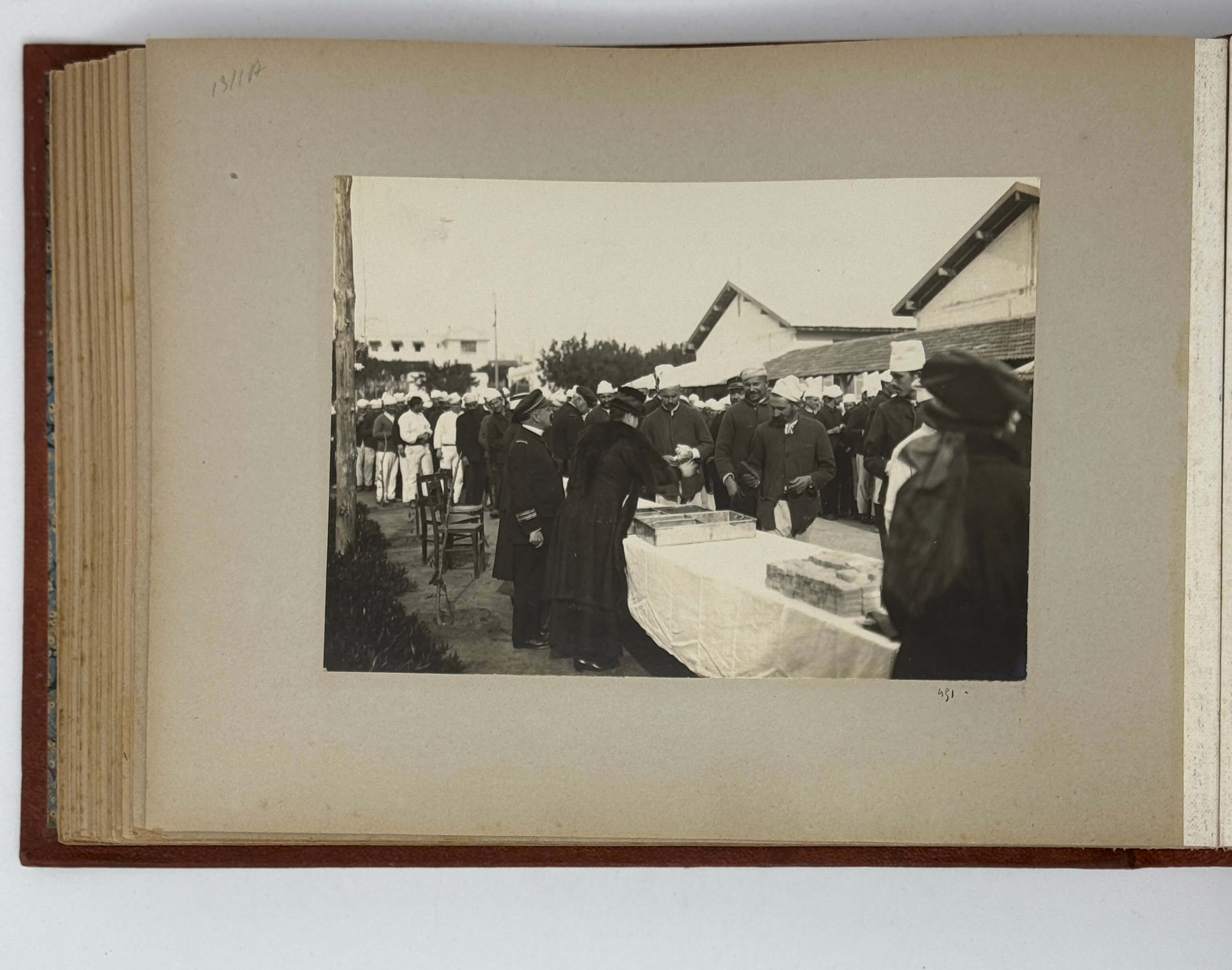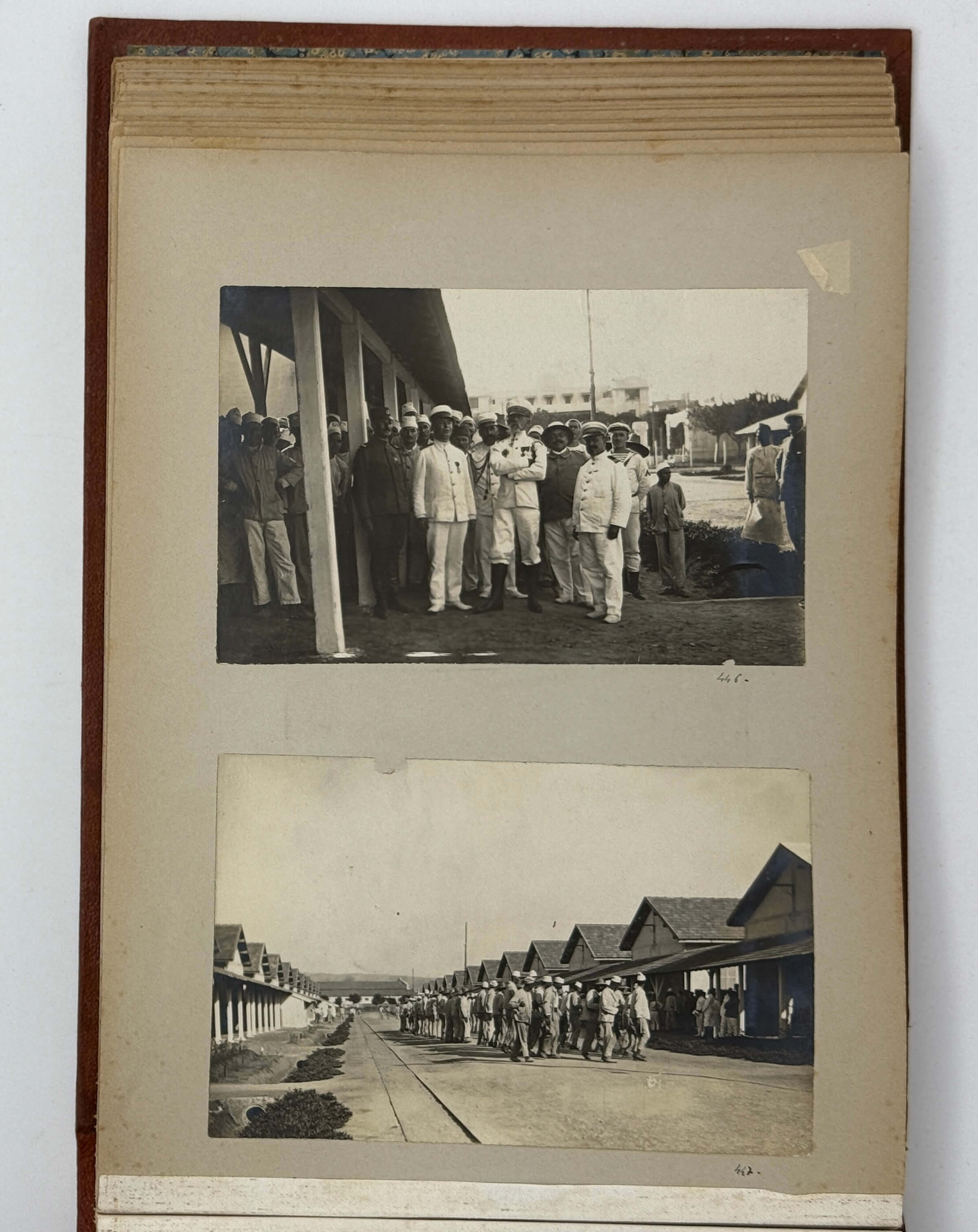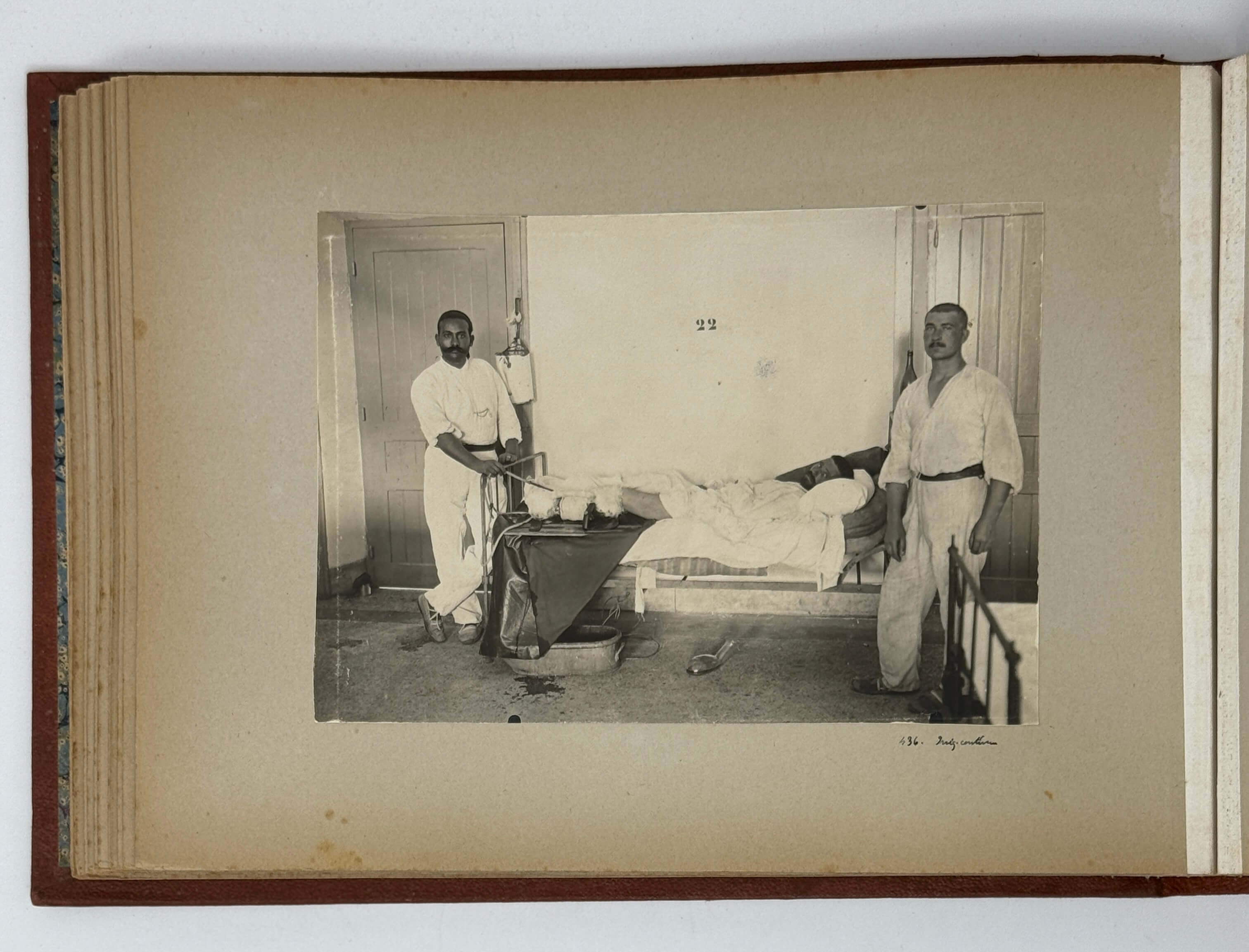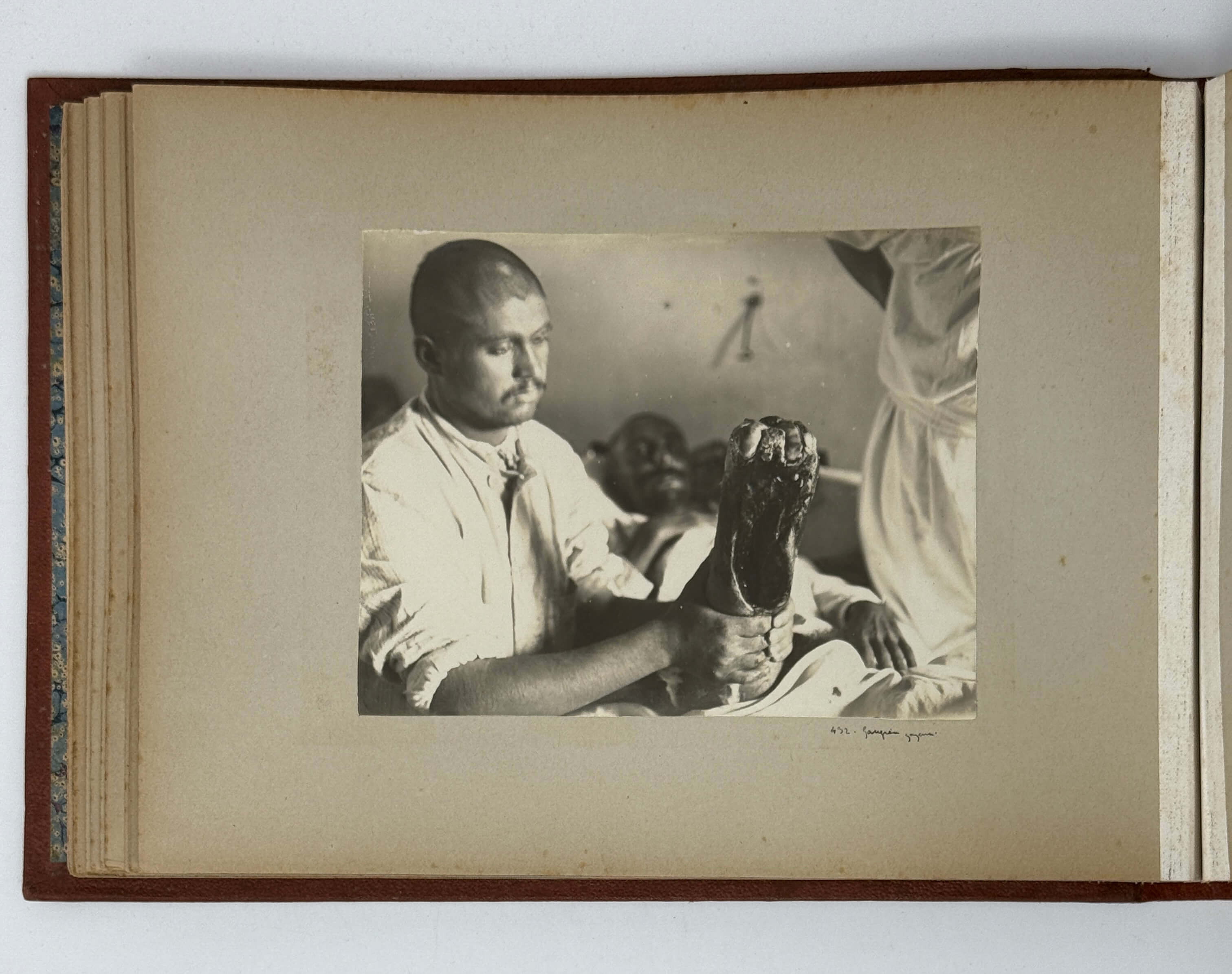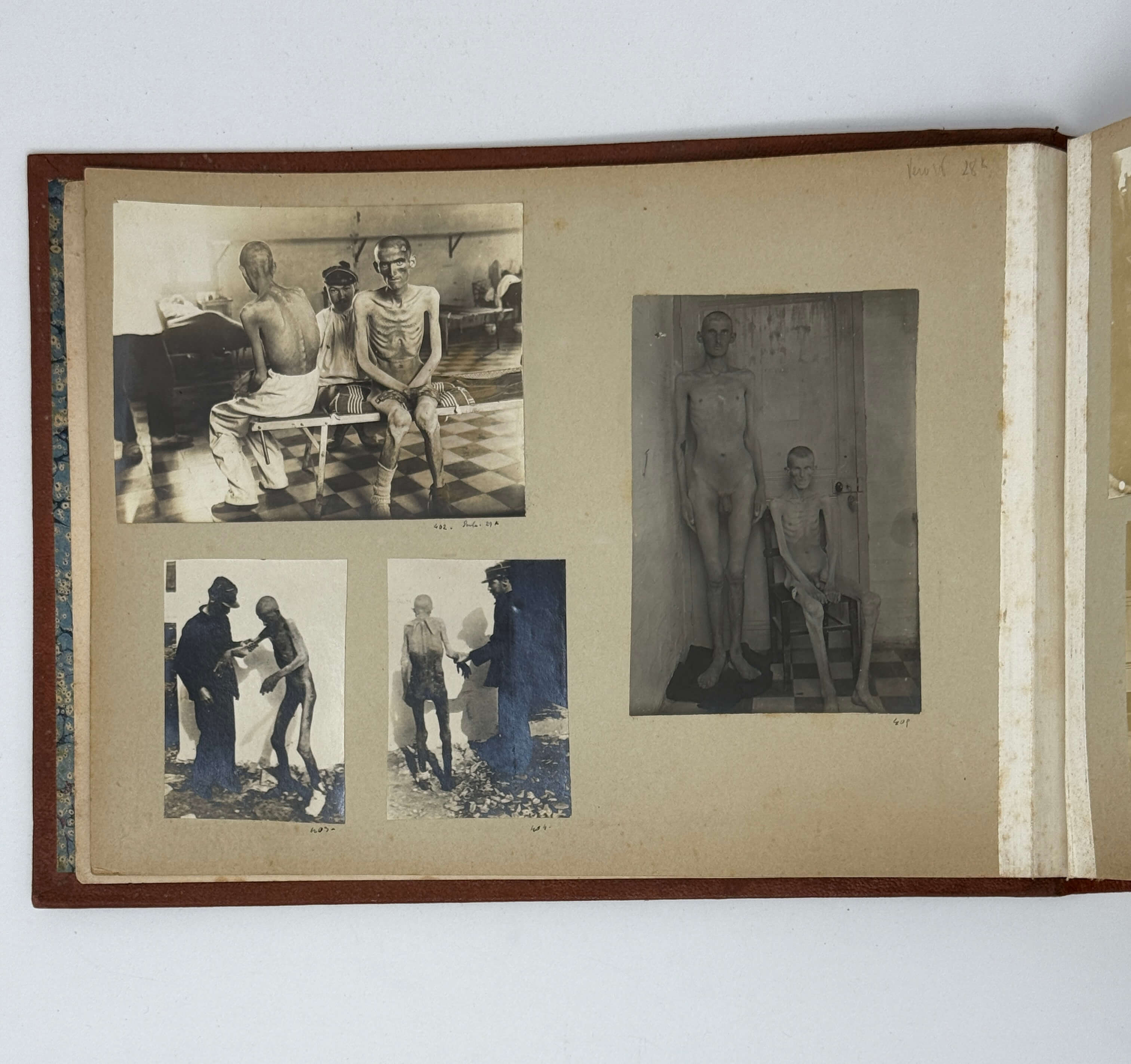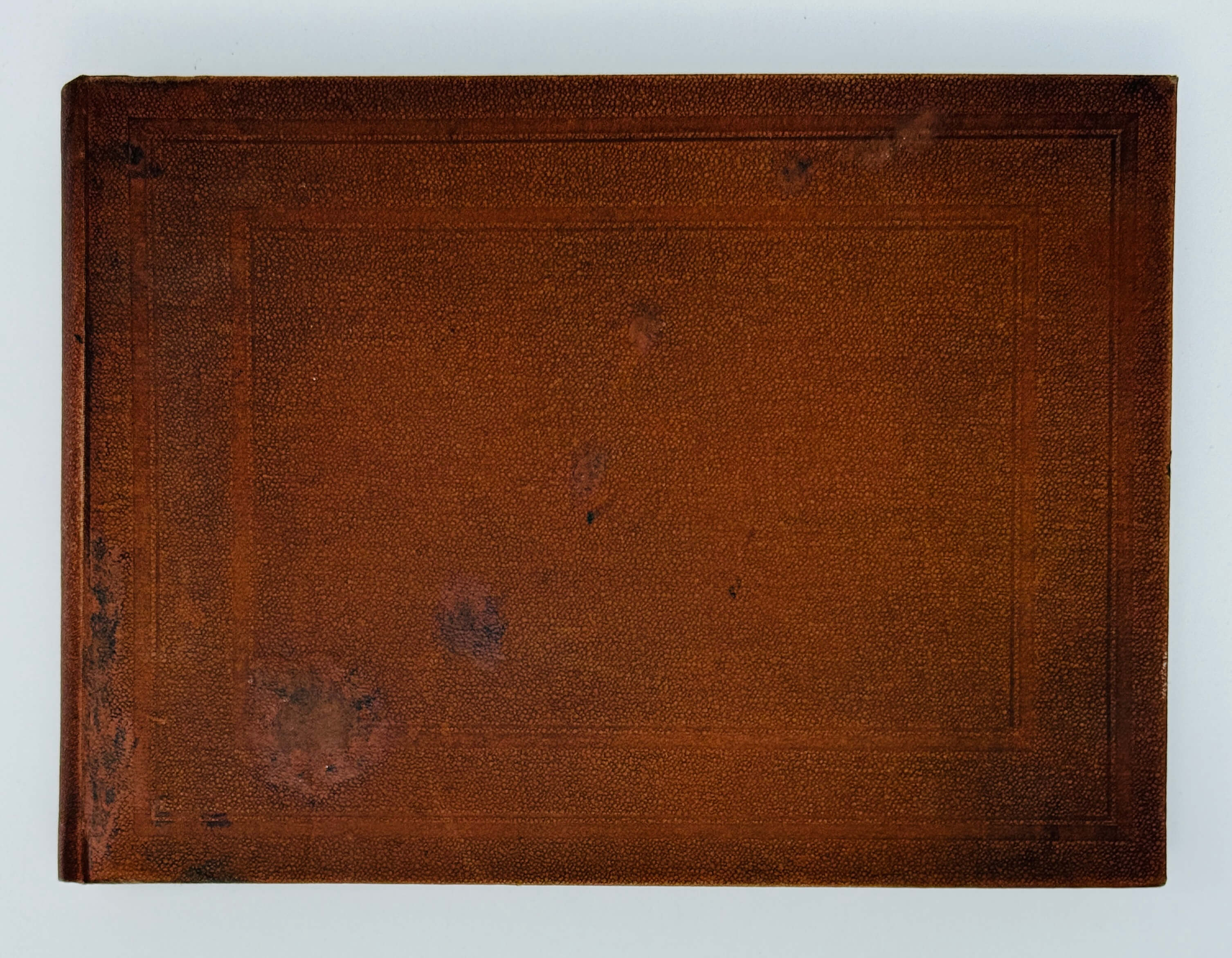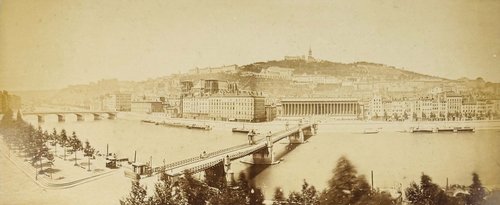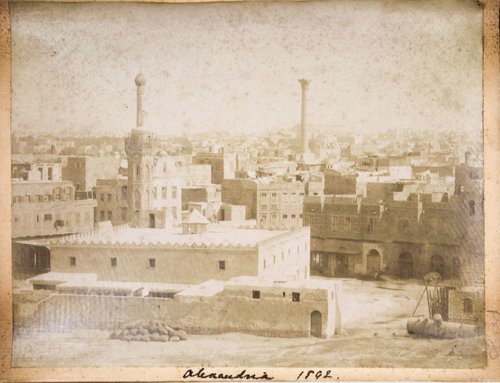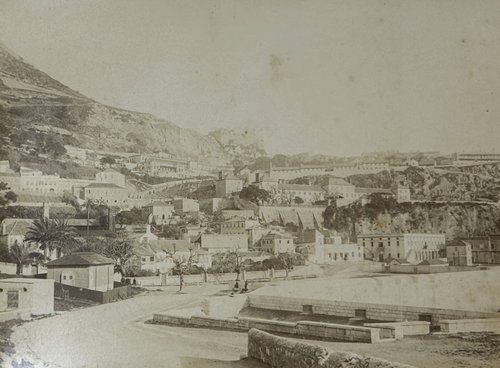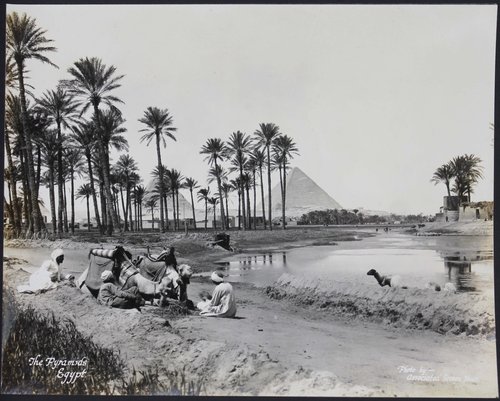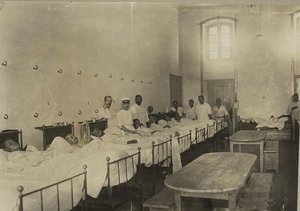
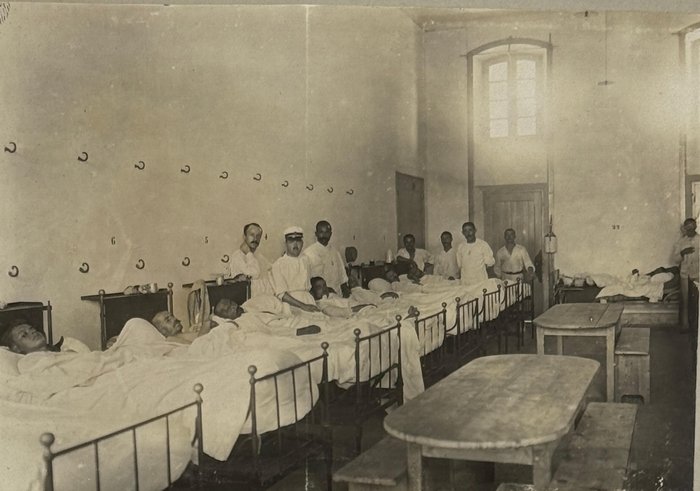
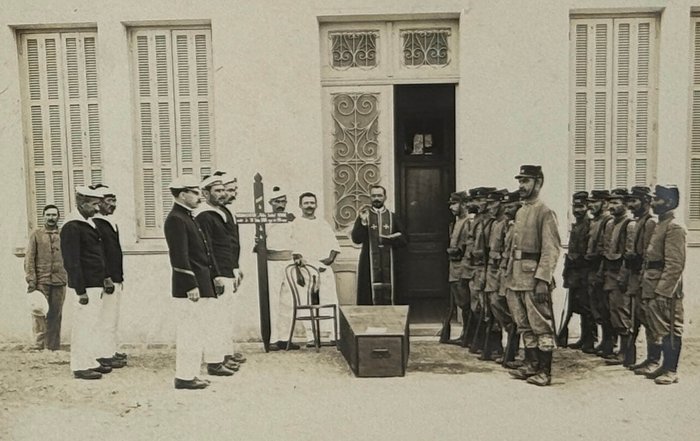
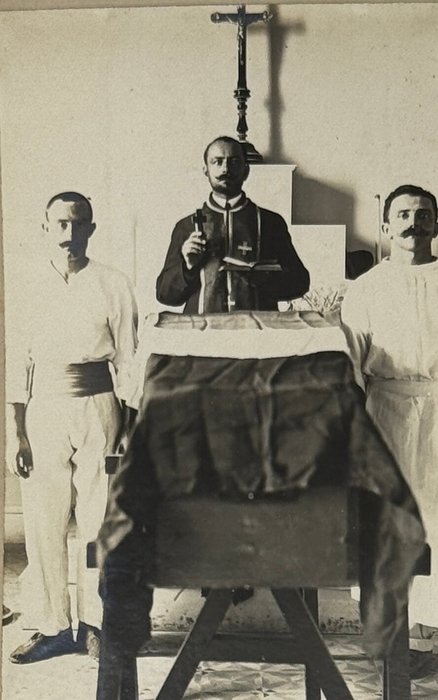
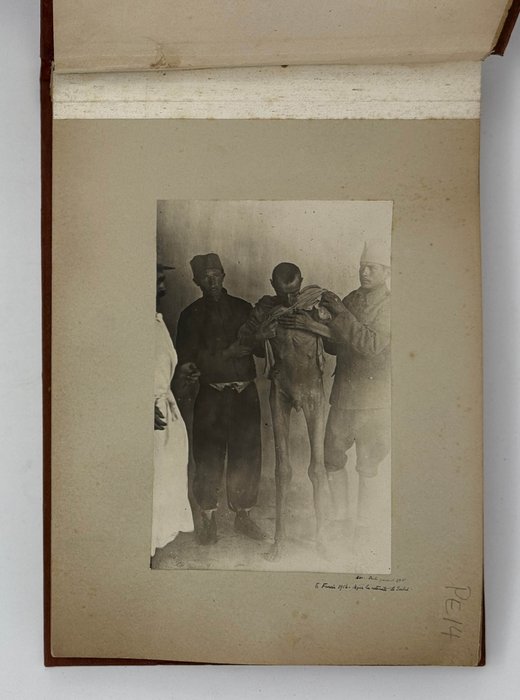
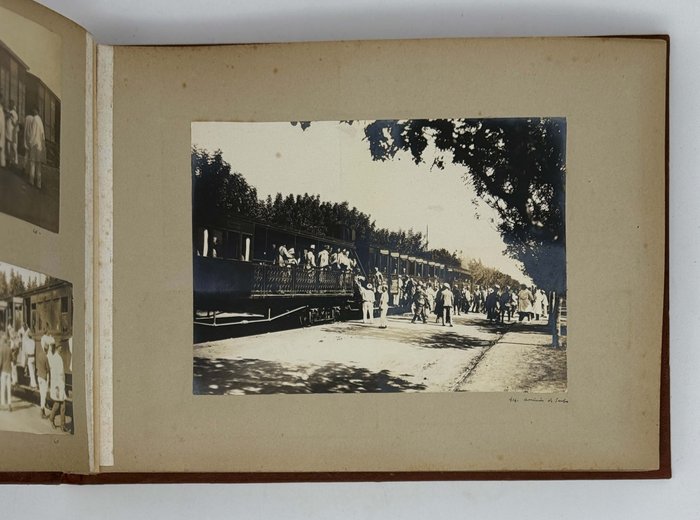
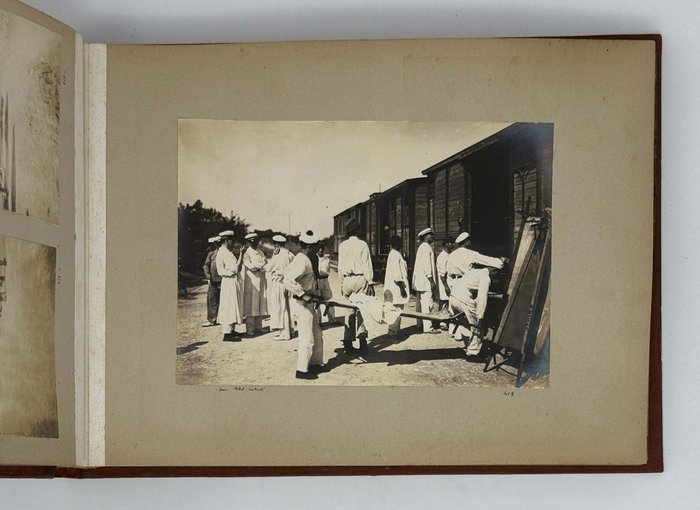
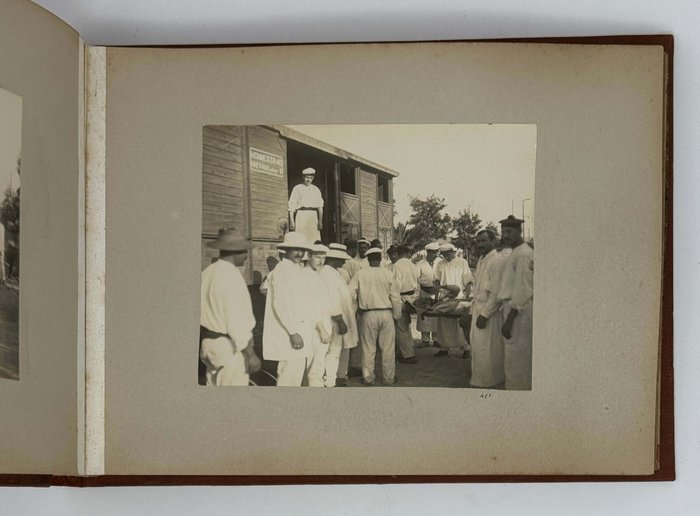
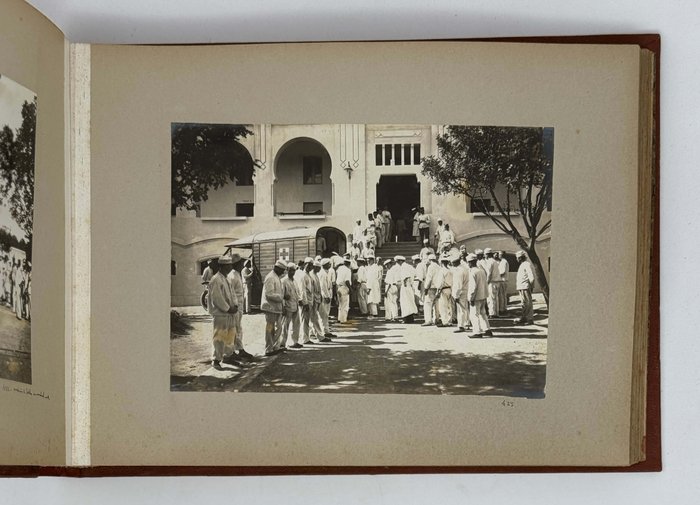
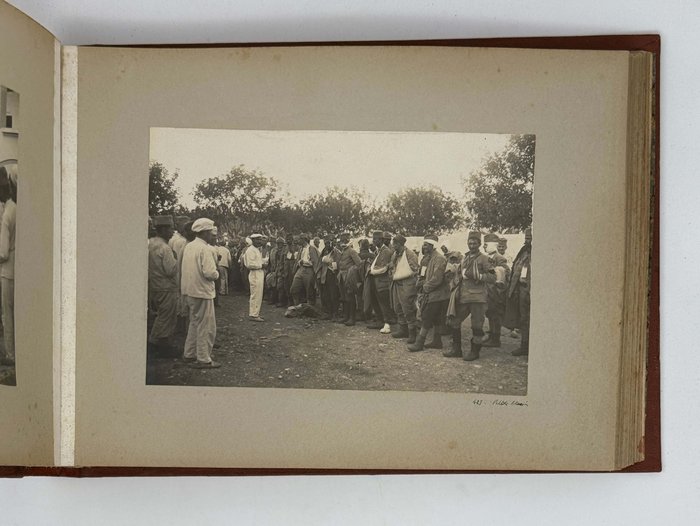
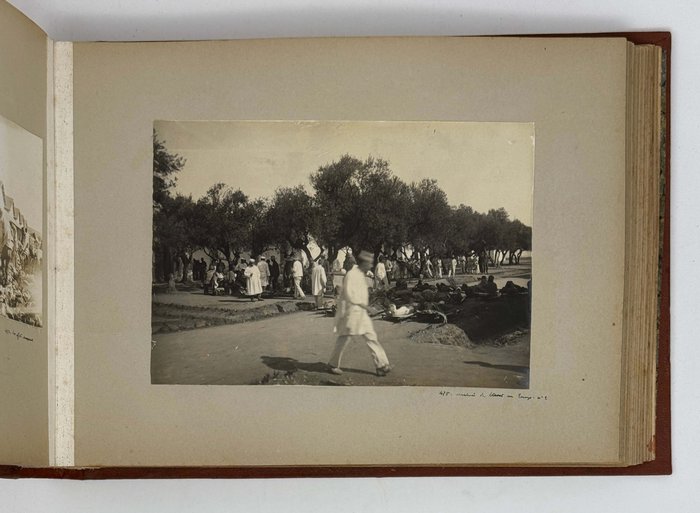
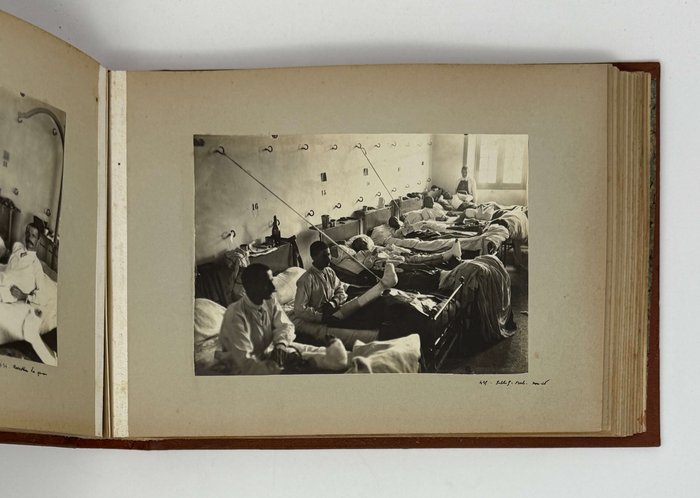
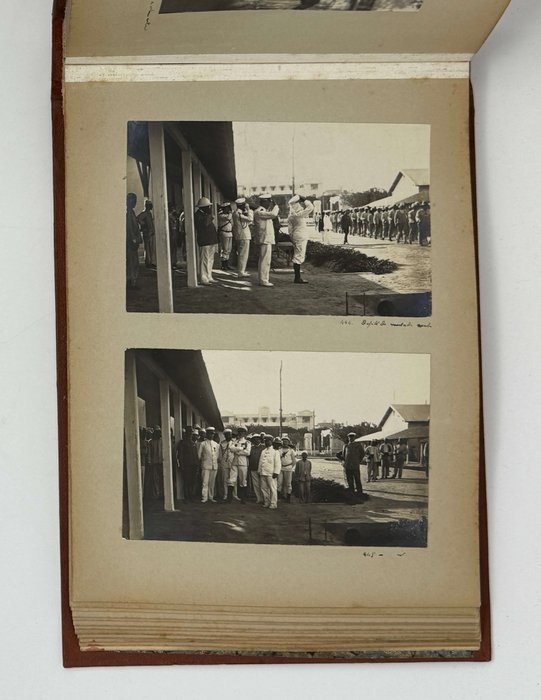
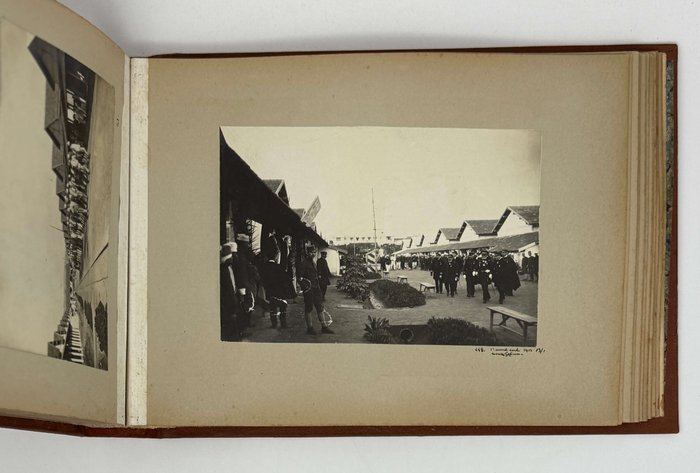
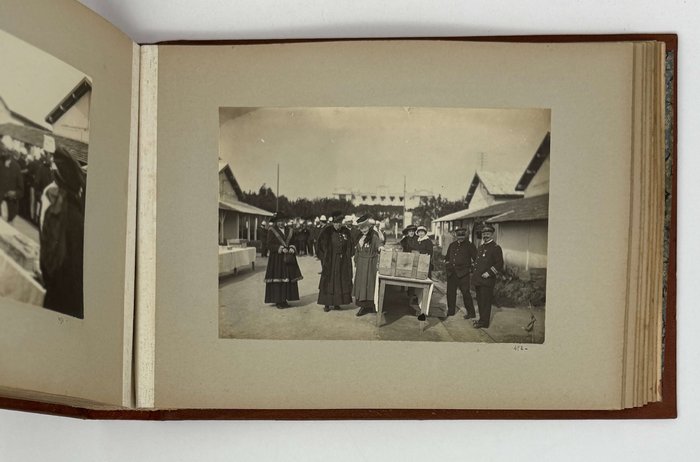
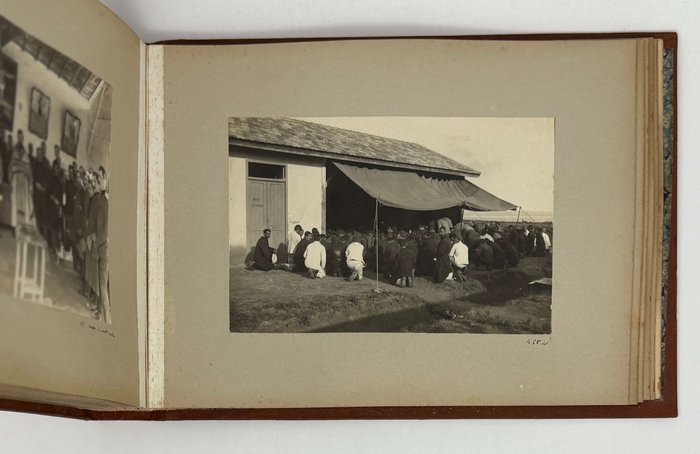
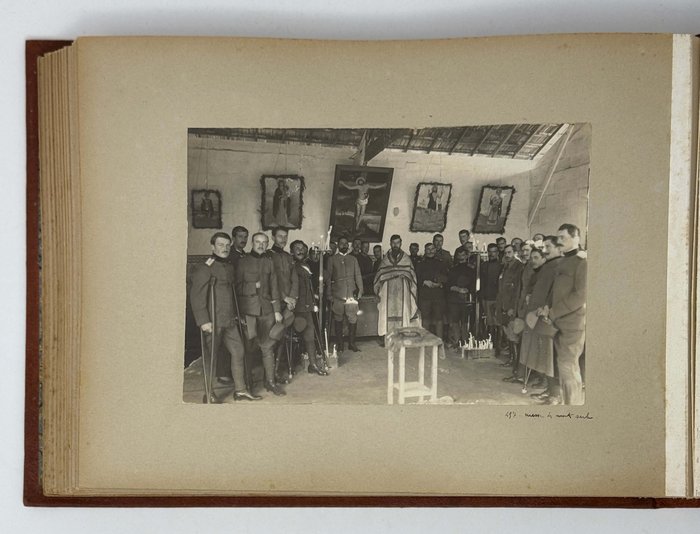
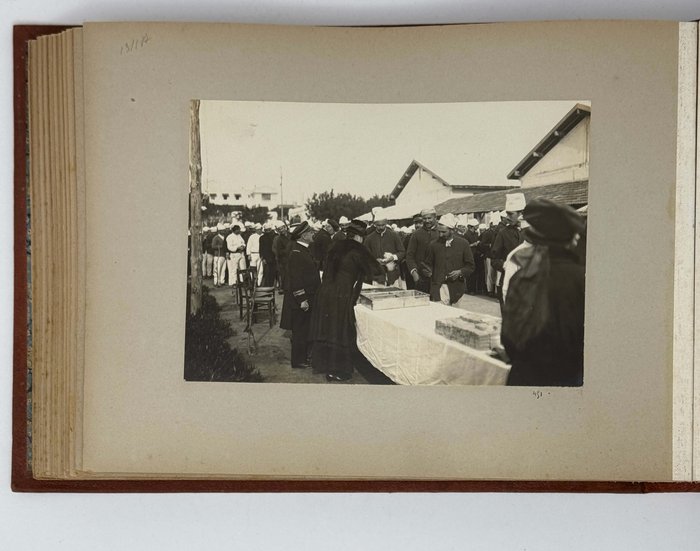
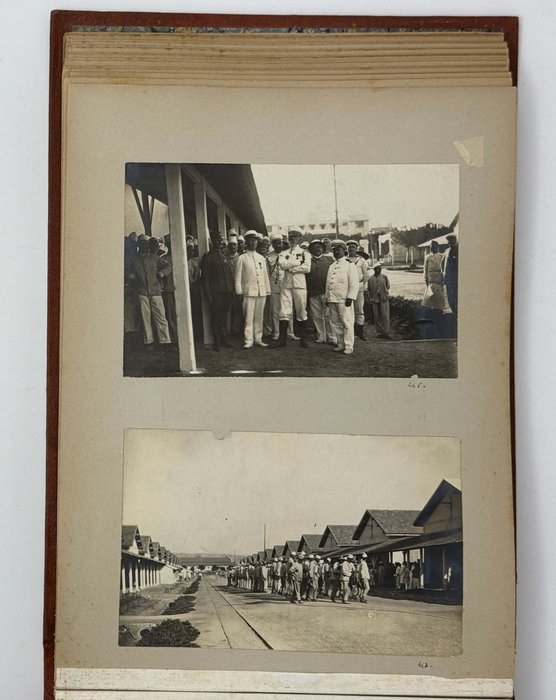
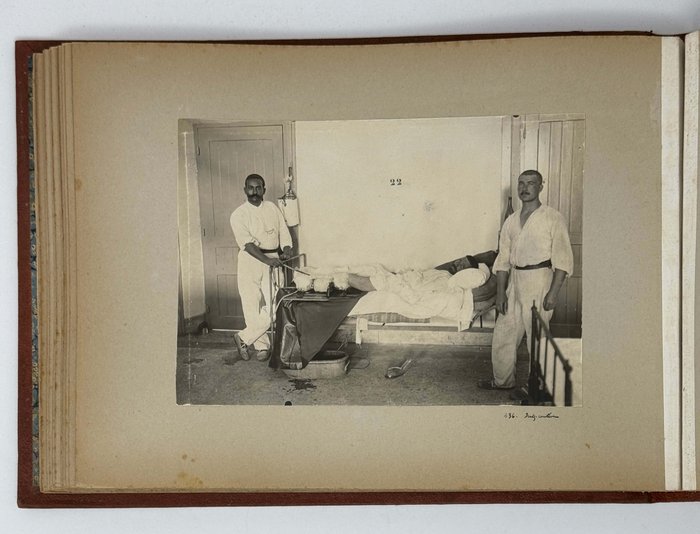
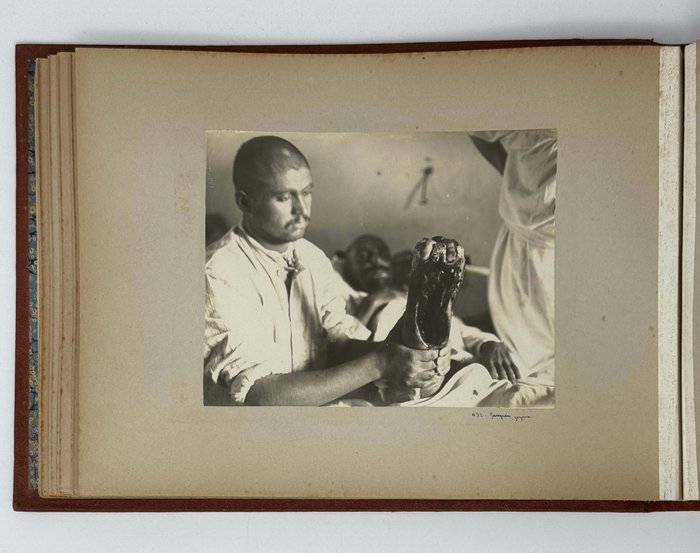
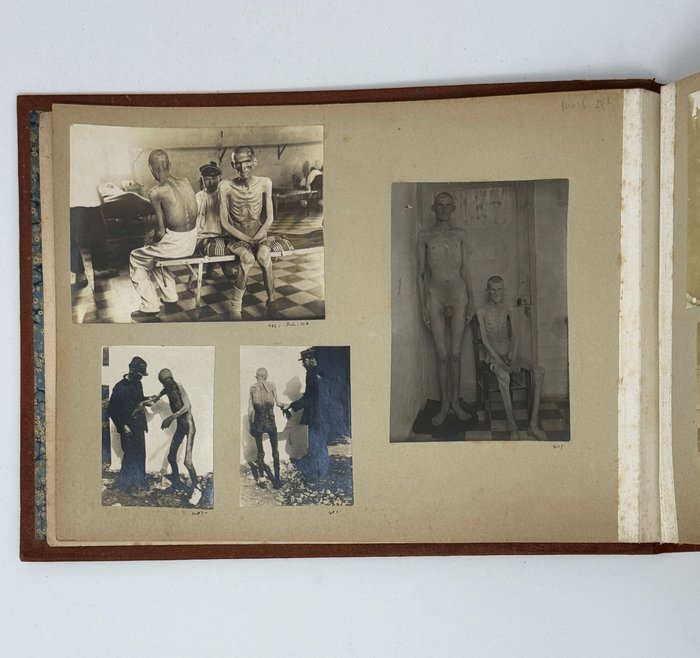
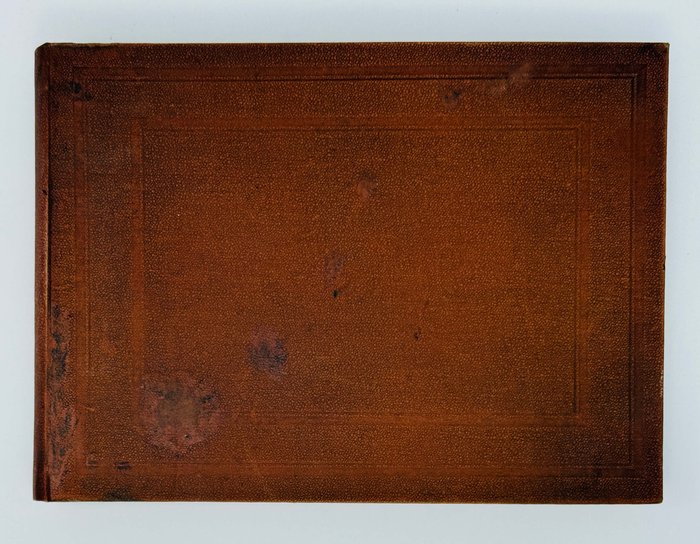
#PE14
Ca. 1916-1917
Oblong Quarto album ca. 20x27 cm (7 ¾ x 10 ¾ in). 25 card stock leaves. With 71 mounted gelatin silver photos, including over thirty large images from ca. 12x17 cm (4 ¾ x 6 ½ in) to ca. 11,5x14,5 cm (4 ½ x 5 ¾ in); the rest of the photos are from ca. 9x14 cm (3 ½ x 5 ½ in) to ca. 5x7 cm (1 ¾ x 2 ½ in). All photos with period ink numbers on the mounts; ca. forty images with captions in French and/or dates on the mounts. One photo with a Serbian photographer’s smudged ink stamp on the lower margin. With a loosely inserted real photo postcard ca. 8,5x13,5 cm (3 ¼ x 5 ¼ in); dense period manuscript text in French on verso. Period light-brown full cloth album; marbled endpapers. Binding slightly soiled and rubbed on extremities, one image with minor scratches to the surface, a few photos mildly faded, but overall a very good album of historically important photos.
Historically significant collection of original gelatin silver photos, documenting the French medical assistance rendered to Serbia after the Great Retreat or Serbian Golgotha of 1915-1916, during WW1.
Following the October of 1915 invasion of Serbia during World War I at the hands of German, Austro-Hungarian and Bulgarian armies, the Serbian army retreated through Albania, an event sometimes called the Albanian Golgotha. During the long march, some 240,000 retreating Serbs [military and civilian] died from the cold, starvation, disease and at the hands of Albanian tribesmen. <…> Because of the massive loss of life, the Serbian army’s retreat through Albania is considered by Serbs to be one of the greatest tragedies in their nation’s history. The survivors of the retreat were so weakened that thousands of them died from sheer exhaustion in the weeks after their rescue" (See more).
“While the main camps of the recuperating army were on the island of Corfu itself (a contingent was sent to Bizerte as well, and many of the civilian refugees were accepted by France), the sick and dying, mostly soldiers, were treated on Vido to prevent epidemics. In spite of Allied material help, the conditions of both the improvised medical facilities and many of the patients on the island resulted in a high fatality rate” (Wikipedia).
The album was compiled by a French doctor who served in one of the French hospital camps for Serbian soldiers, most likely established near Bizerte (then in the French Protectorate of Tunisia). The loosely inserted real photo postcard depicts the compiler and a group of doctors and nurses performing surgery; the manuscript text on verso mentions the compiler’s work in Bizerte.
The album opens with five portraits and scenes with starved and exhausted Serbian soldiers; one is captioned “February 6, 1916, after the retreat from Serbia”. Two of the images were identified as taken at the Vido Island, based on the collections of the Open Heritage Platform of the French Ministry of Culture.
Most photos document the treatment of Serbian soldiers in a French hospital camp, most likely located near Bizerte. The images include a series of scenes of the soldiers’ arrival in train cars, their disembarking and unloading of wounded, the arrival of ambulance trucks to the main entrance of the hospital and the disinfection of their clothes and belongings. The hospital building looks very similar to one of French naval establishments at Ponty Bay, Bizerte (see more). Six images show the interior of hospital rooms with recovering soldiers laying in beds, male nurses posing next to them; one photo depict a nurse showing a gangrenous leg of a soldier. Several group portraits show recovering soldiers posing at the “Pavillon le Coueur,” in front of their barracks, dressed in traditional costumes, playing musical instruments, performing a traditional Kolo dance, &c.
Eleven photos document official visits, reviews and charity work in the camp, including “distribution of sugar” by a group of ladies – apparently, French. One of the military officials was identified as Admiral Émille Guépratte (1856-1939), who then served as the maritime prefect of Bizerte (one of his period photos). Over a dozen images show a Serbian Orthodox funeral service: interior of a chapel with a priest and Serbian officers, a kneeling crowd at a building with a sign “Depot mortuaire,” funeral procession and internment. Two photos at the rear show a Serbian cemetery at “Sidi Yaya.”
Overall an important collection of original photos, showing the work of a French hospital camp for Serbian soldiers in Tunisia during WW1.

